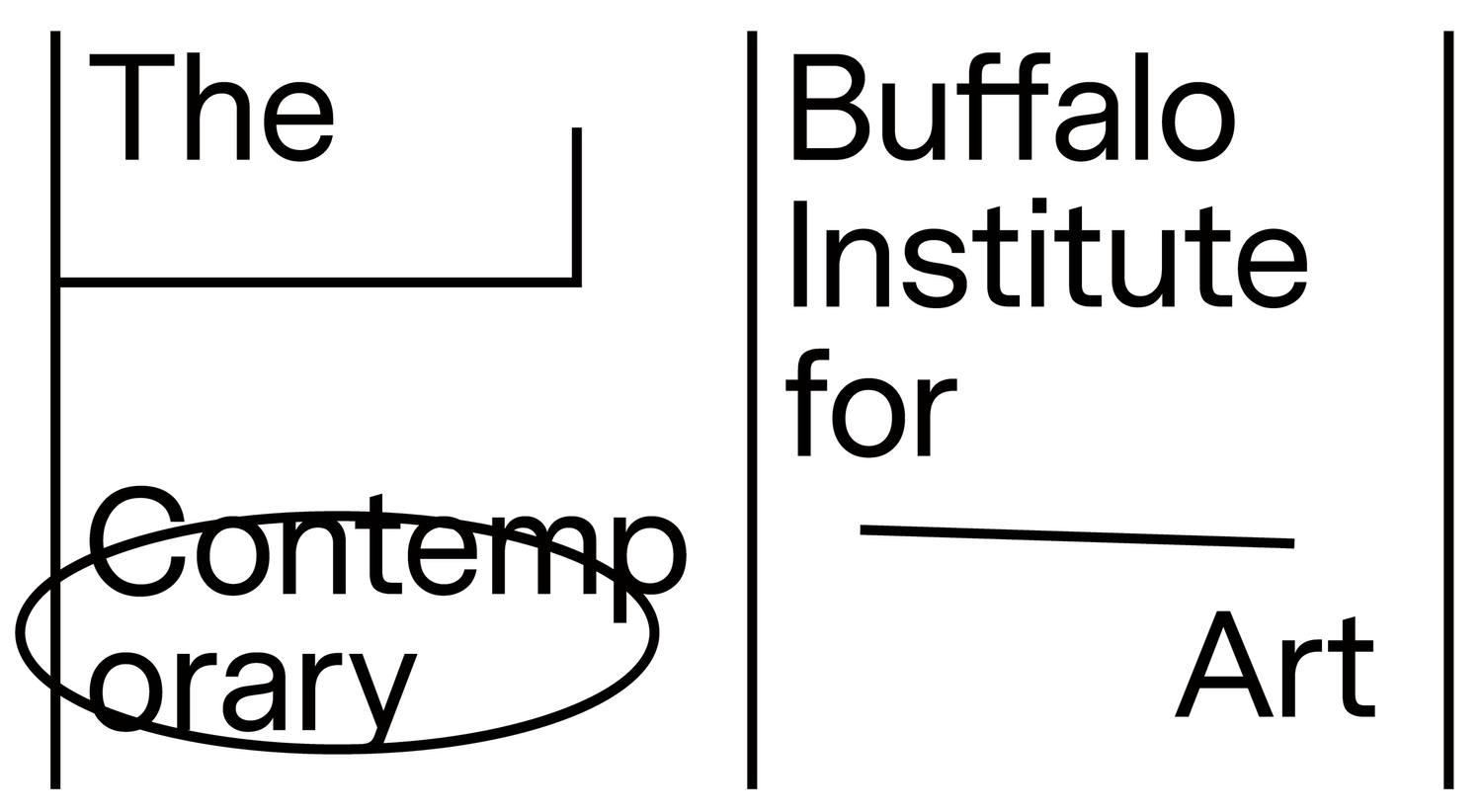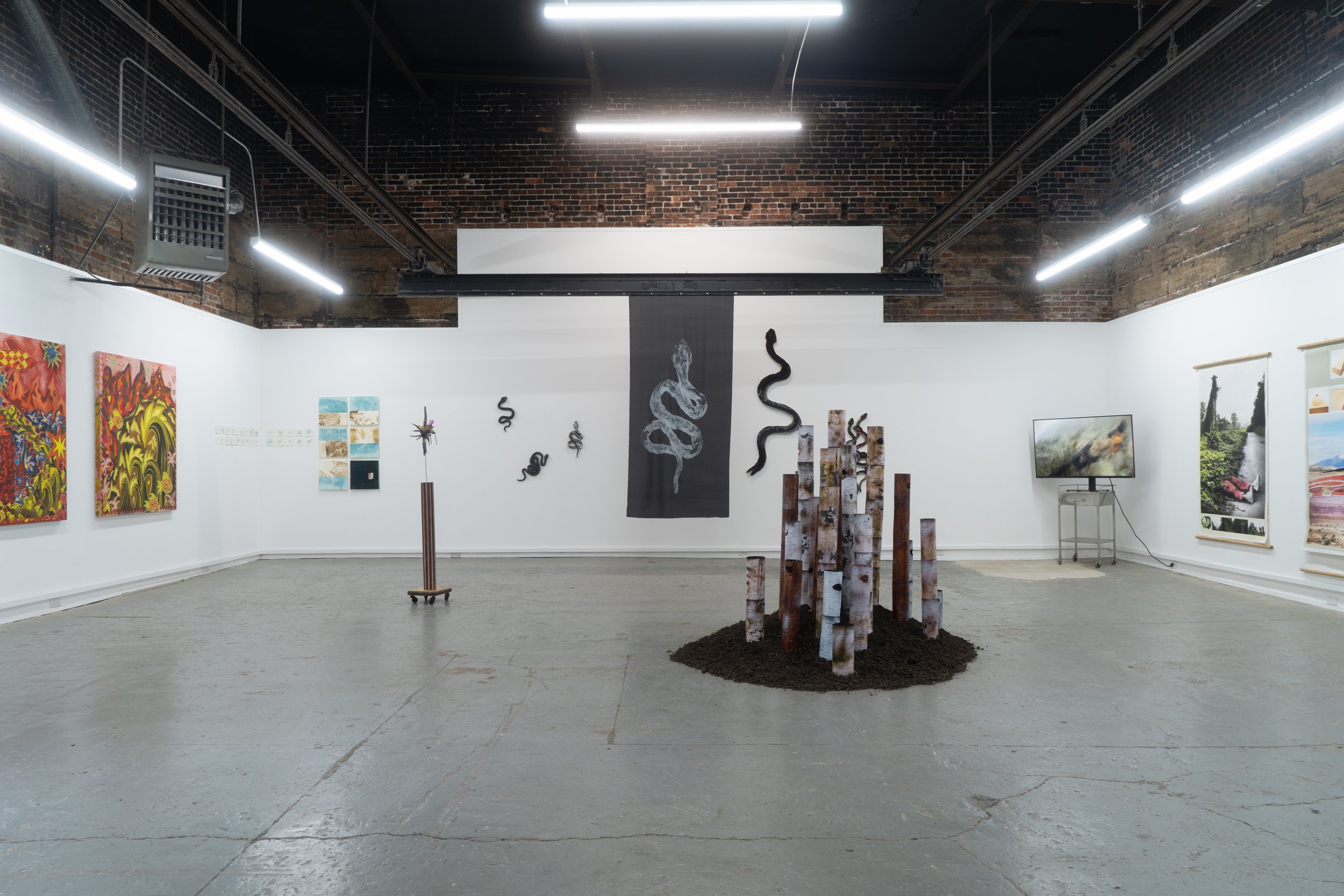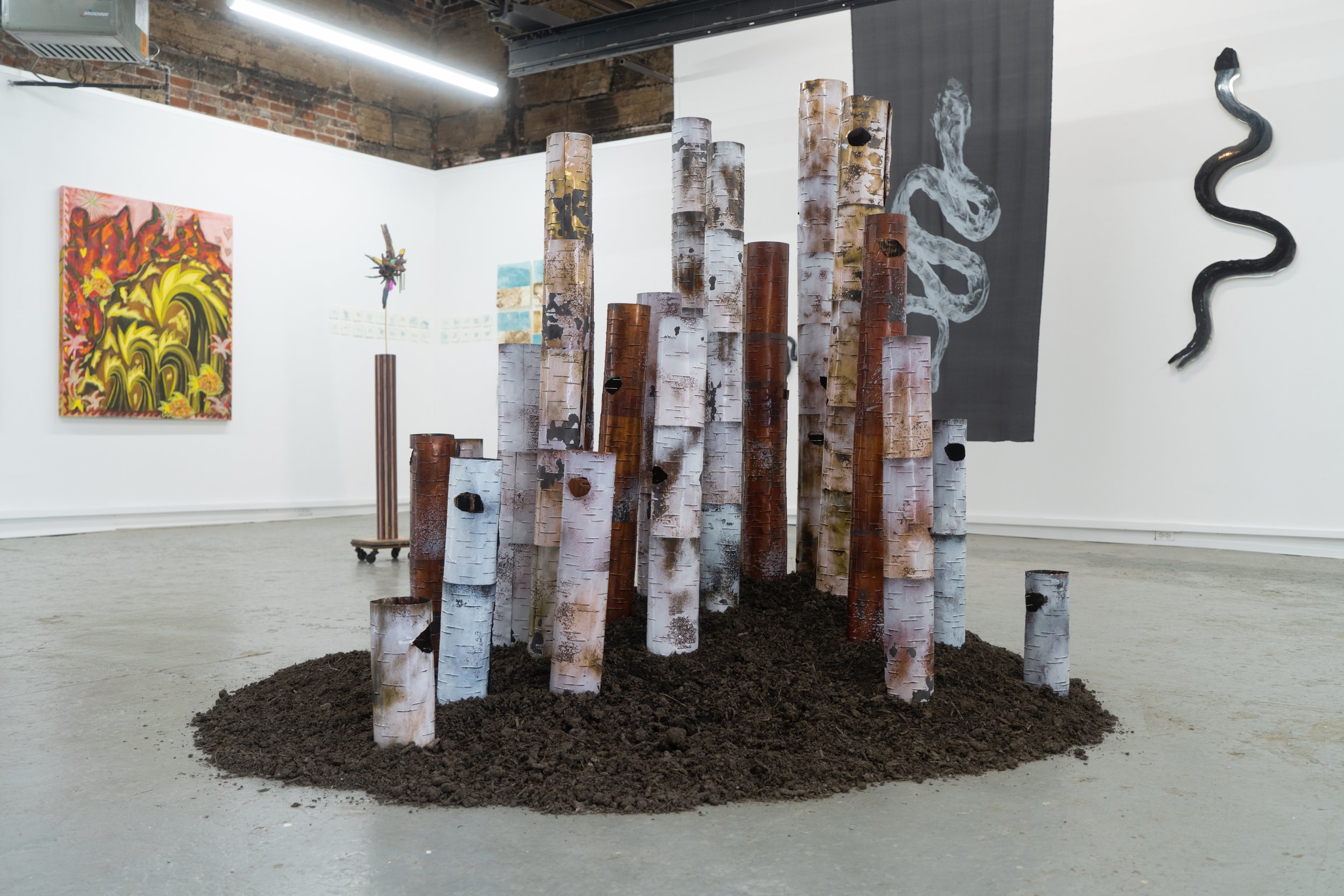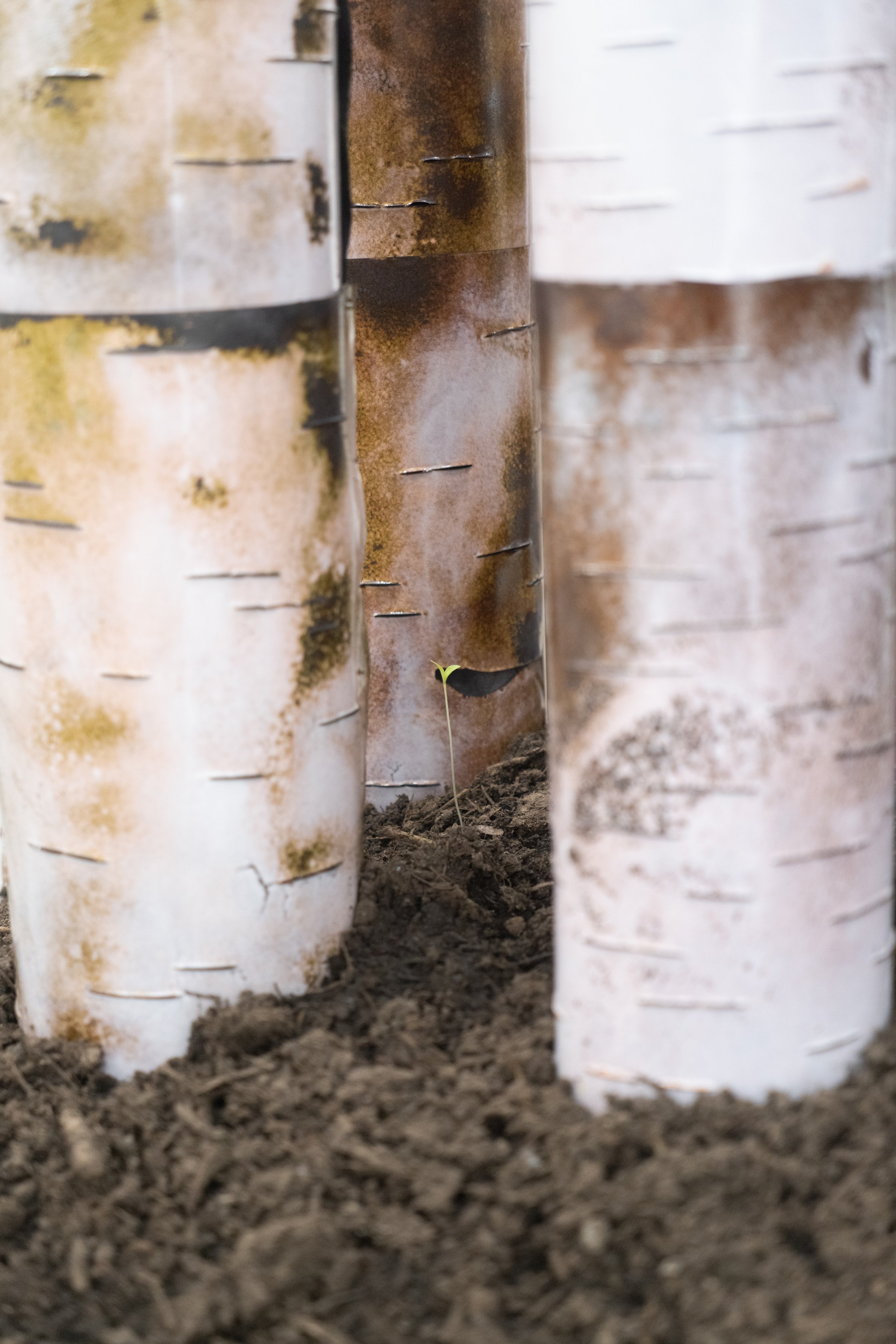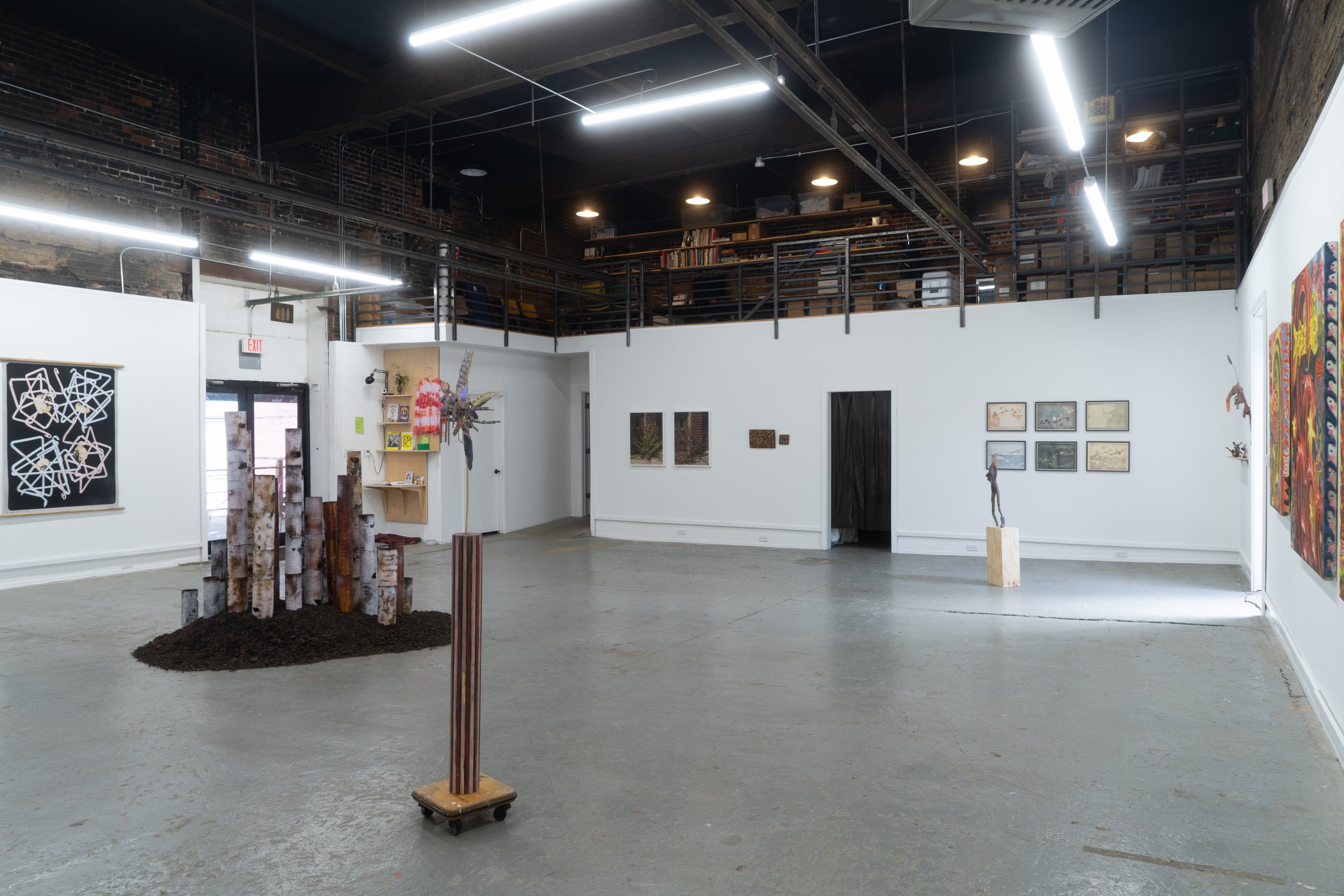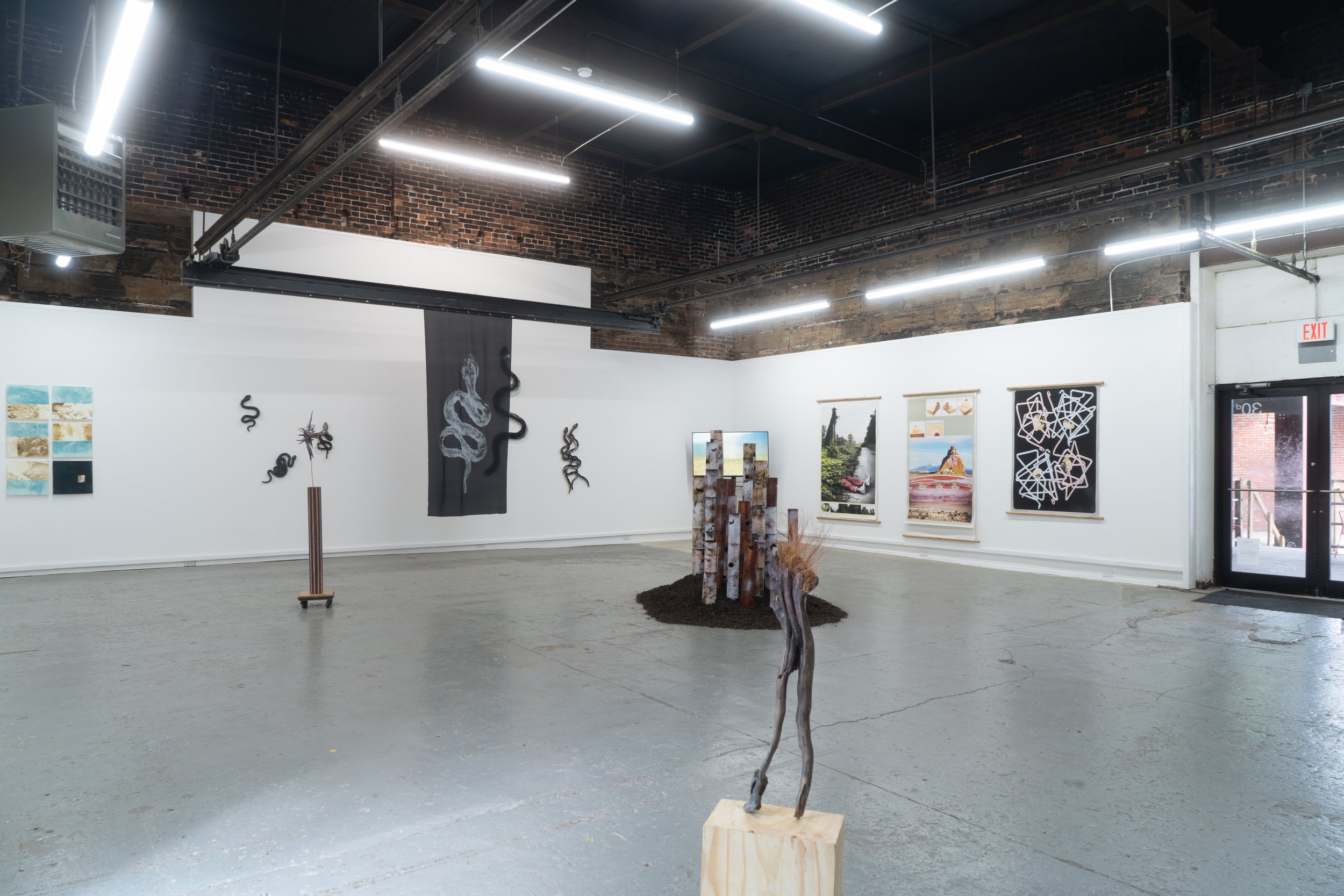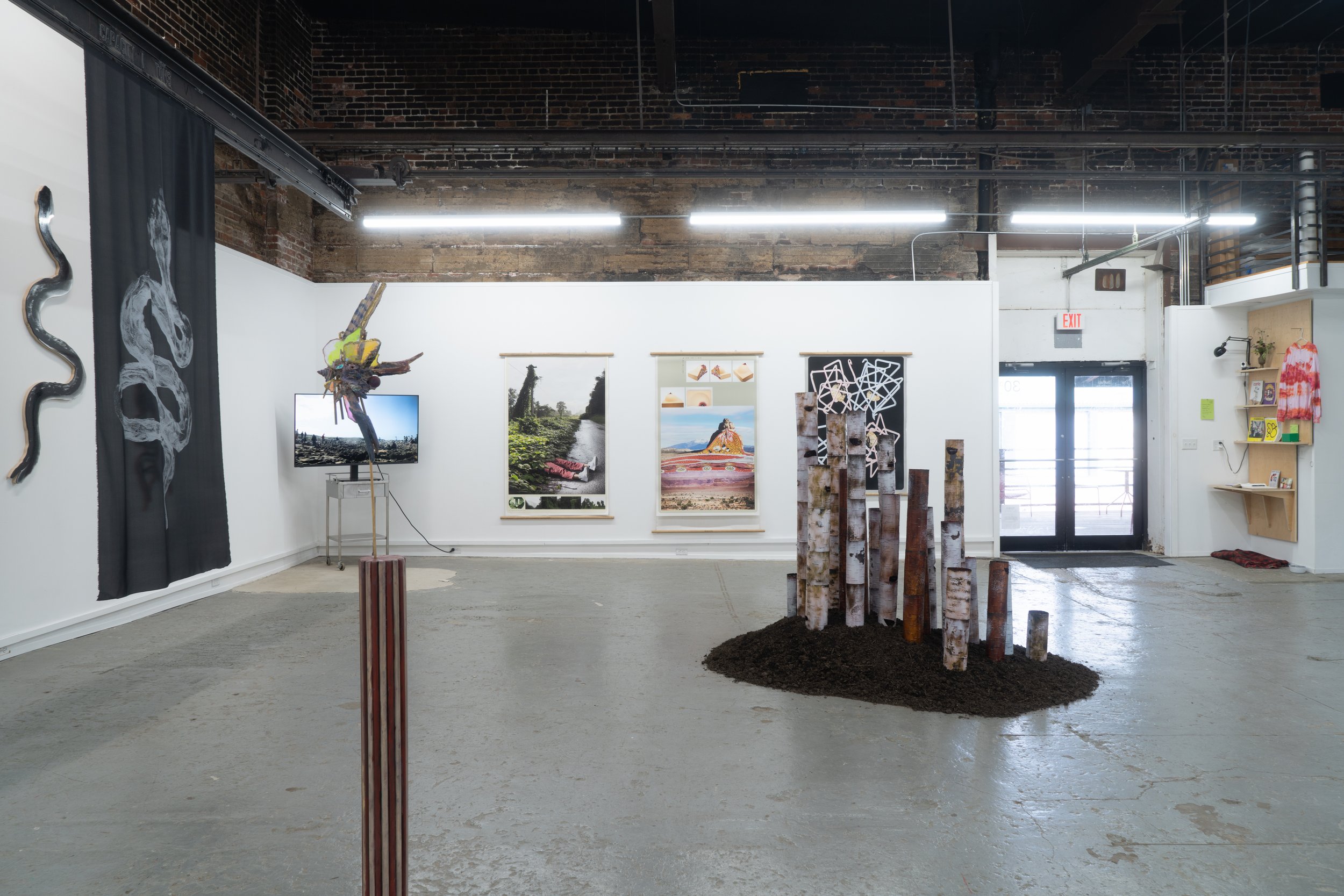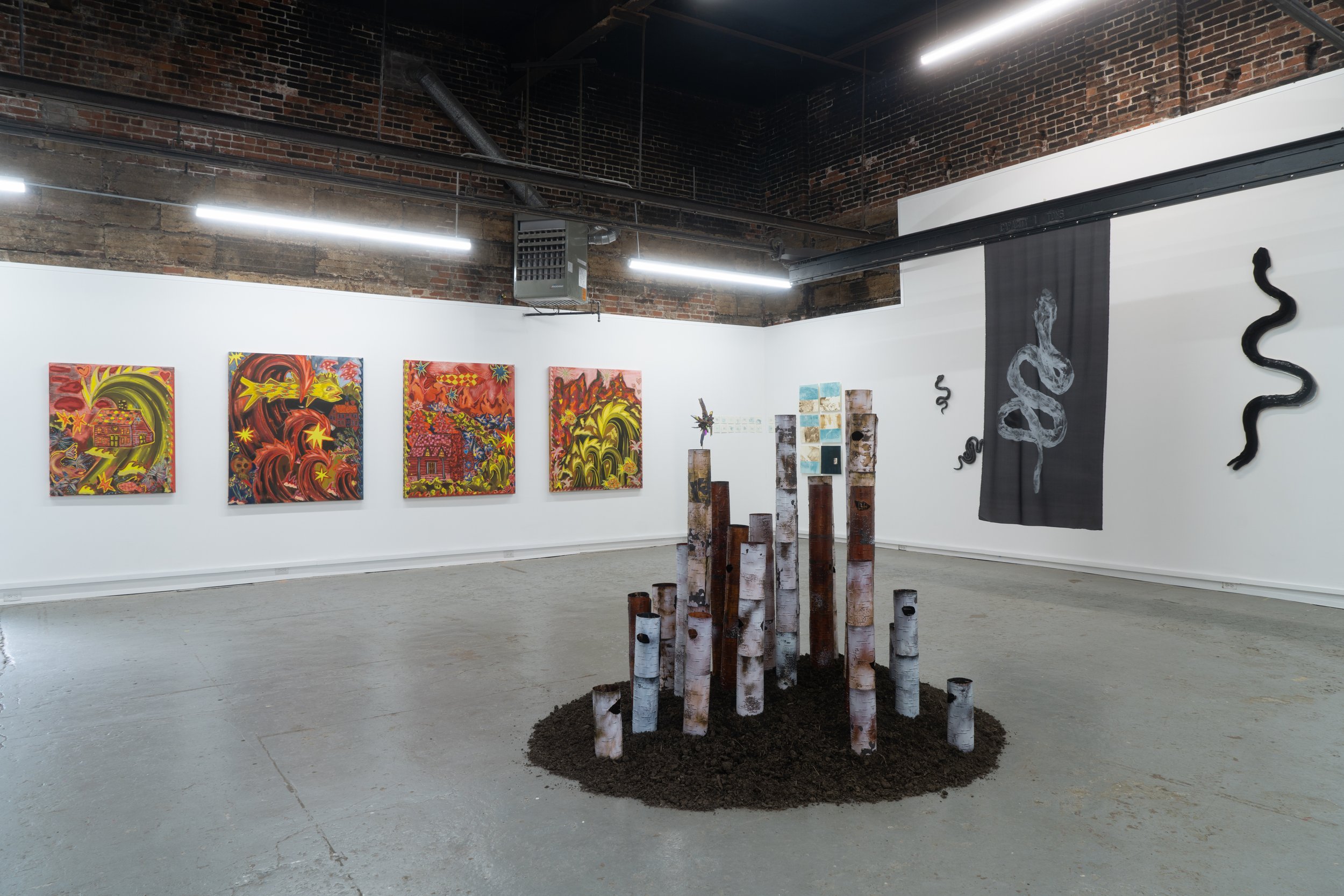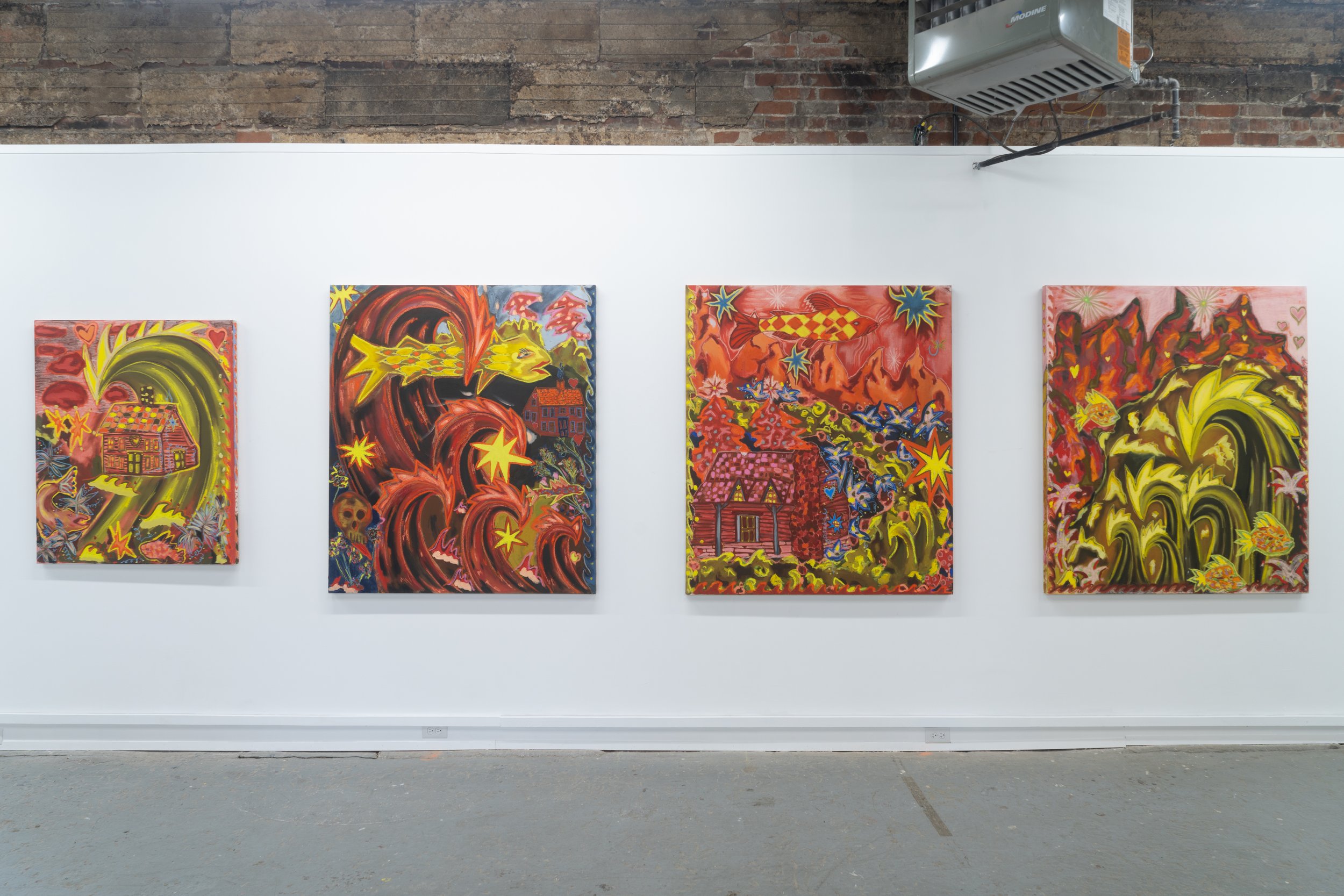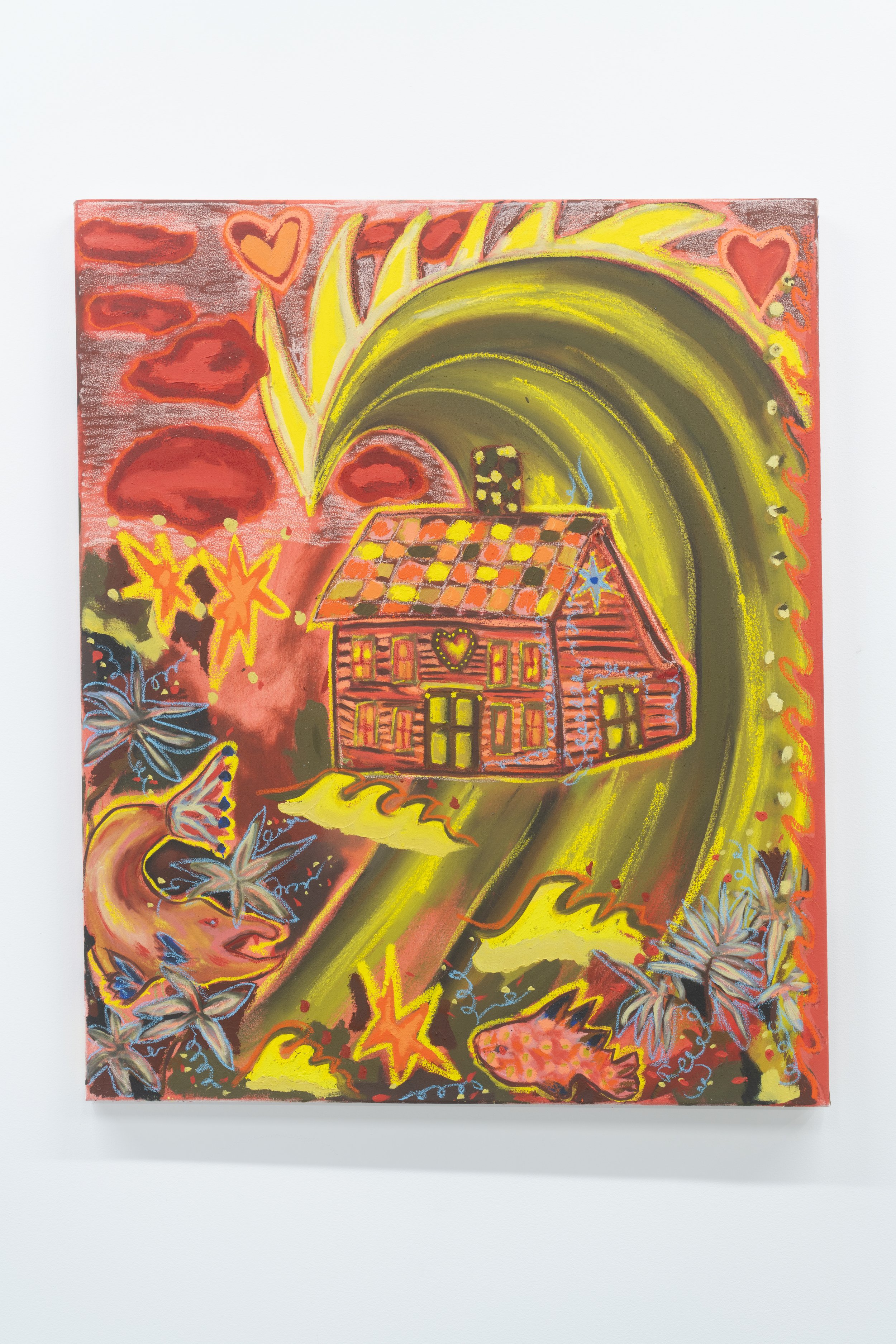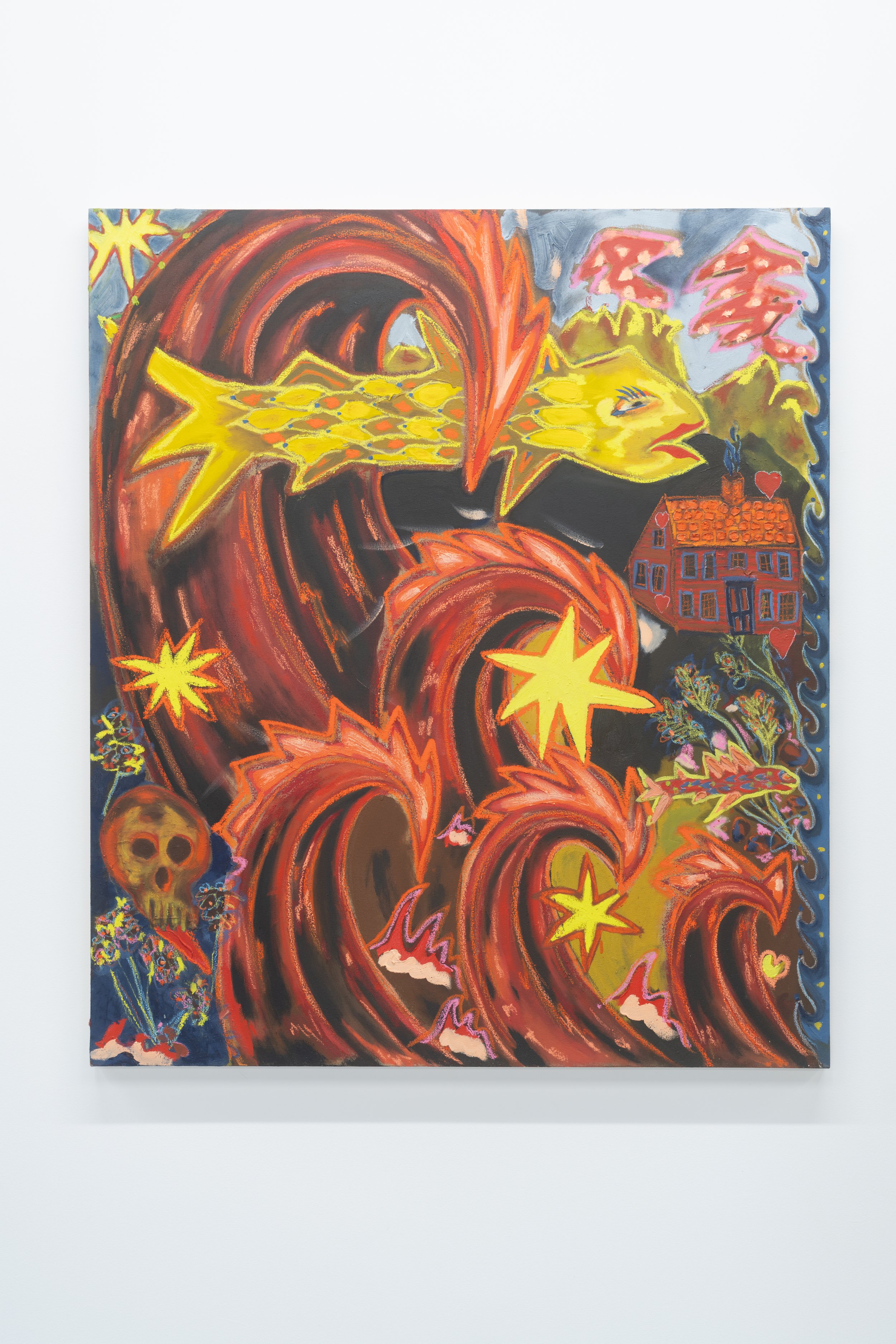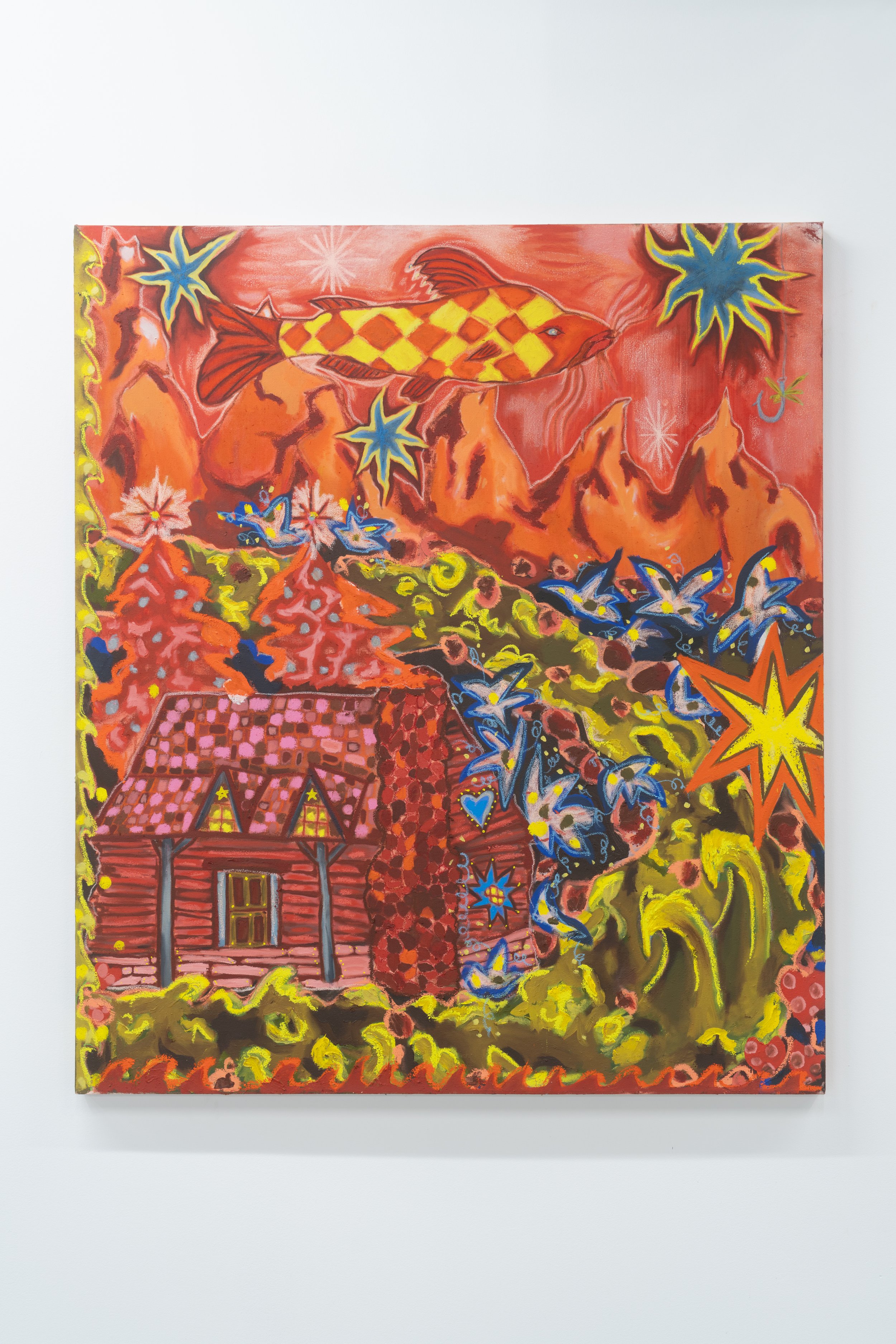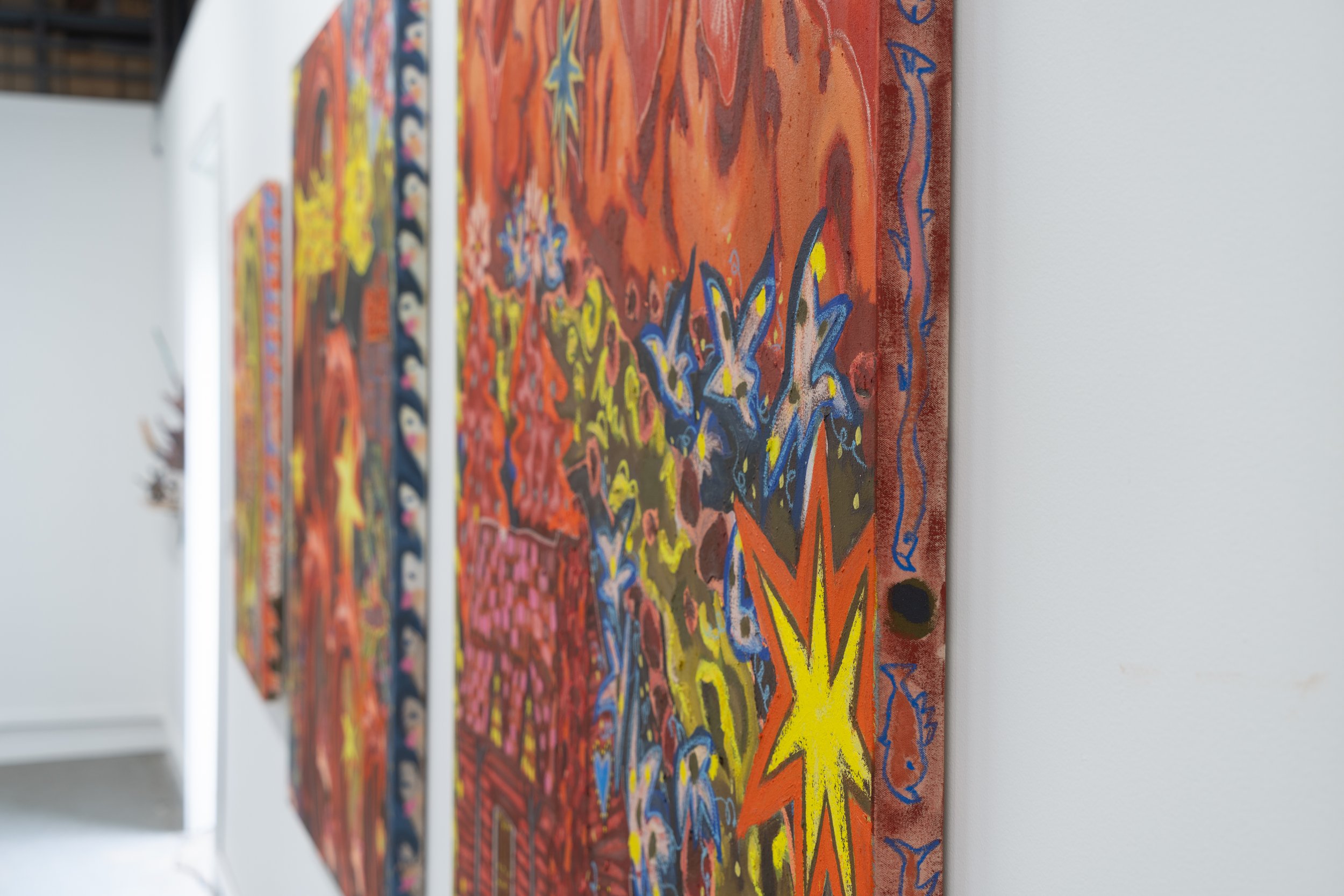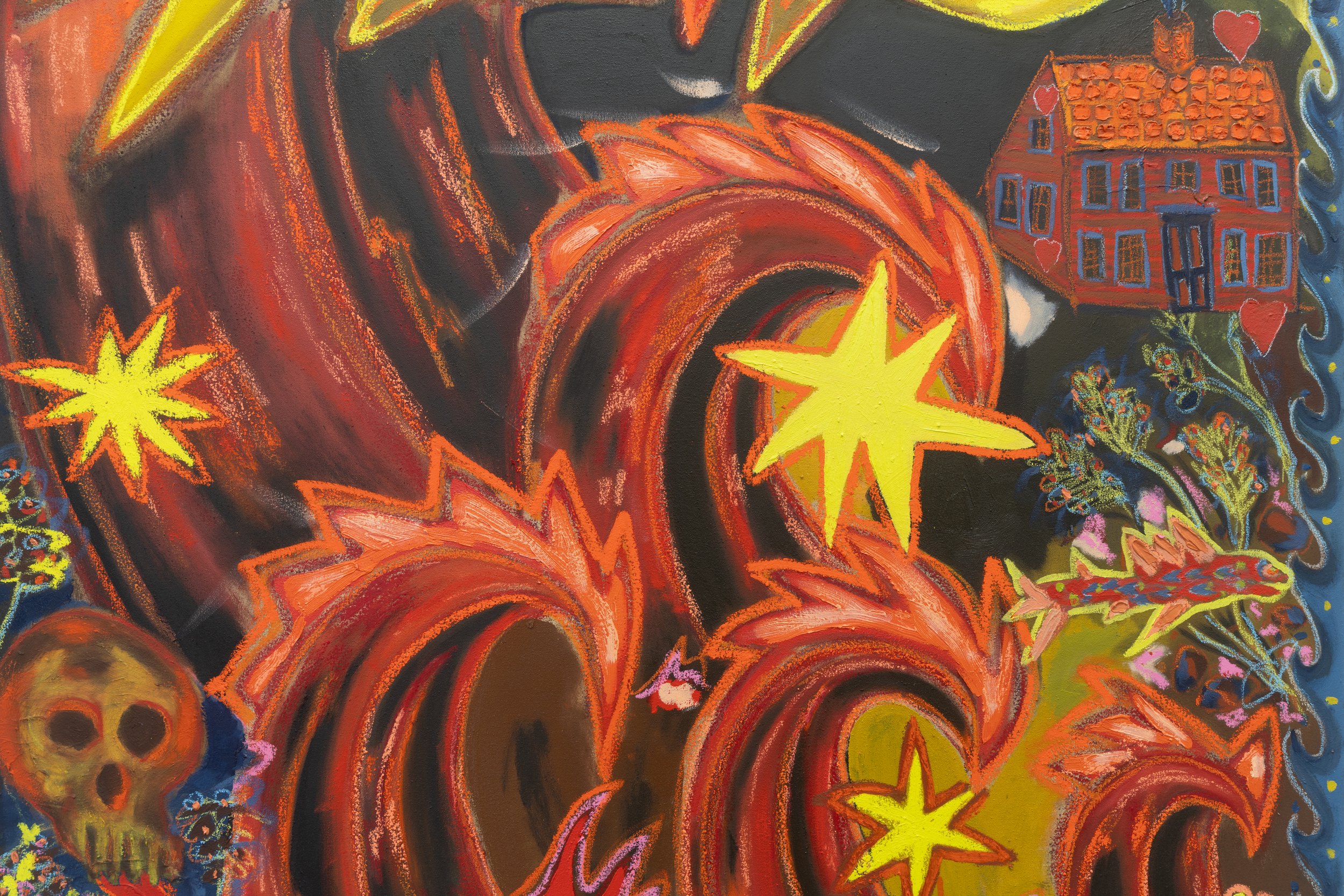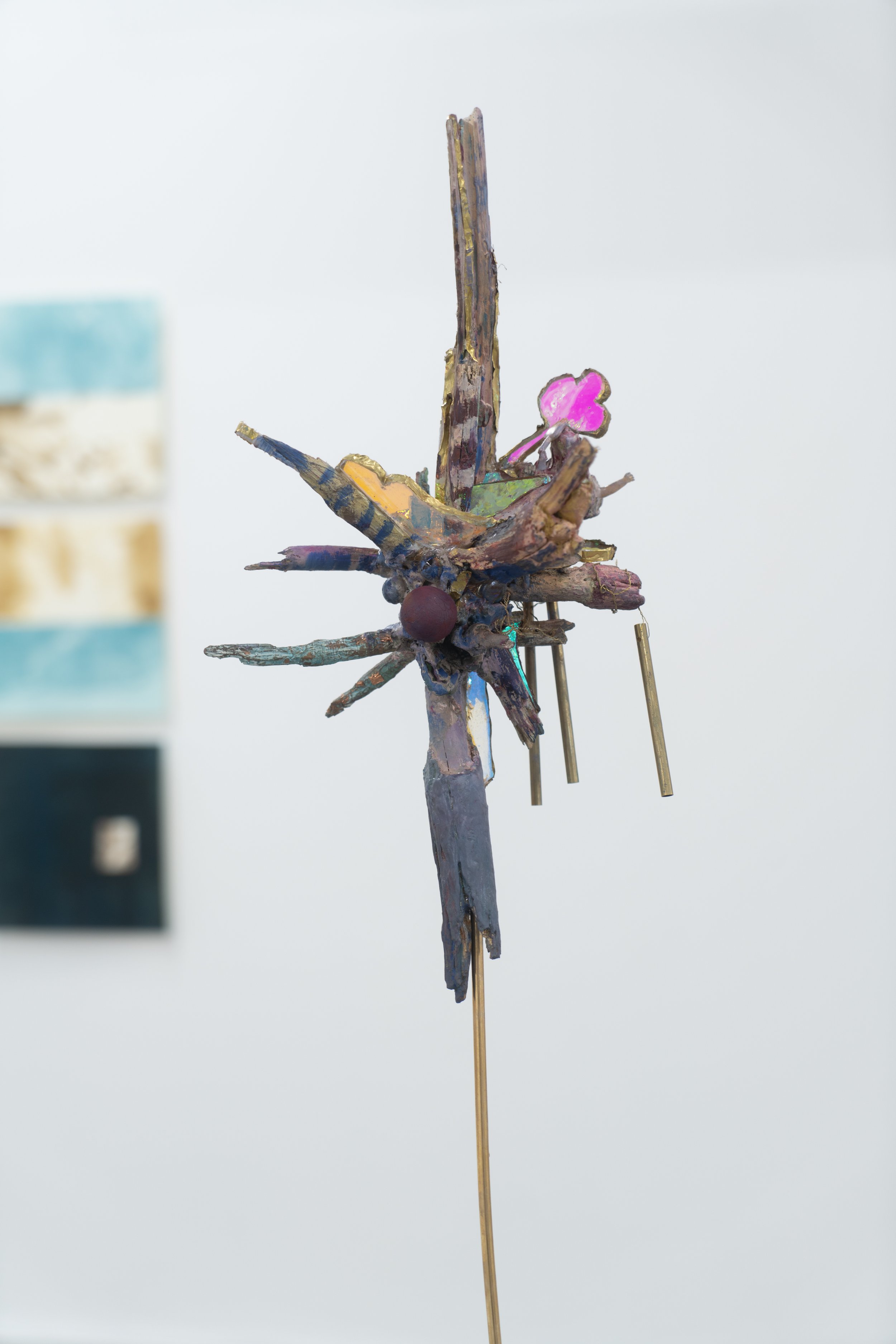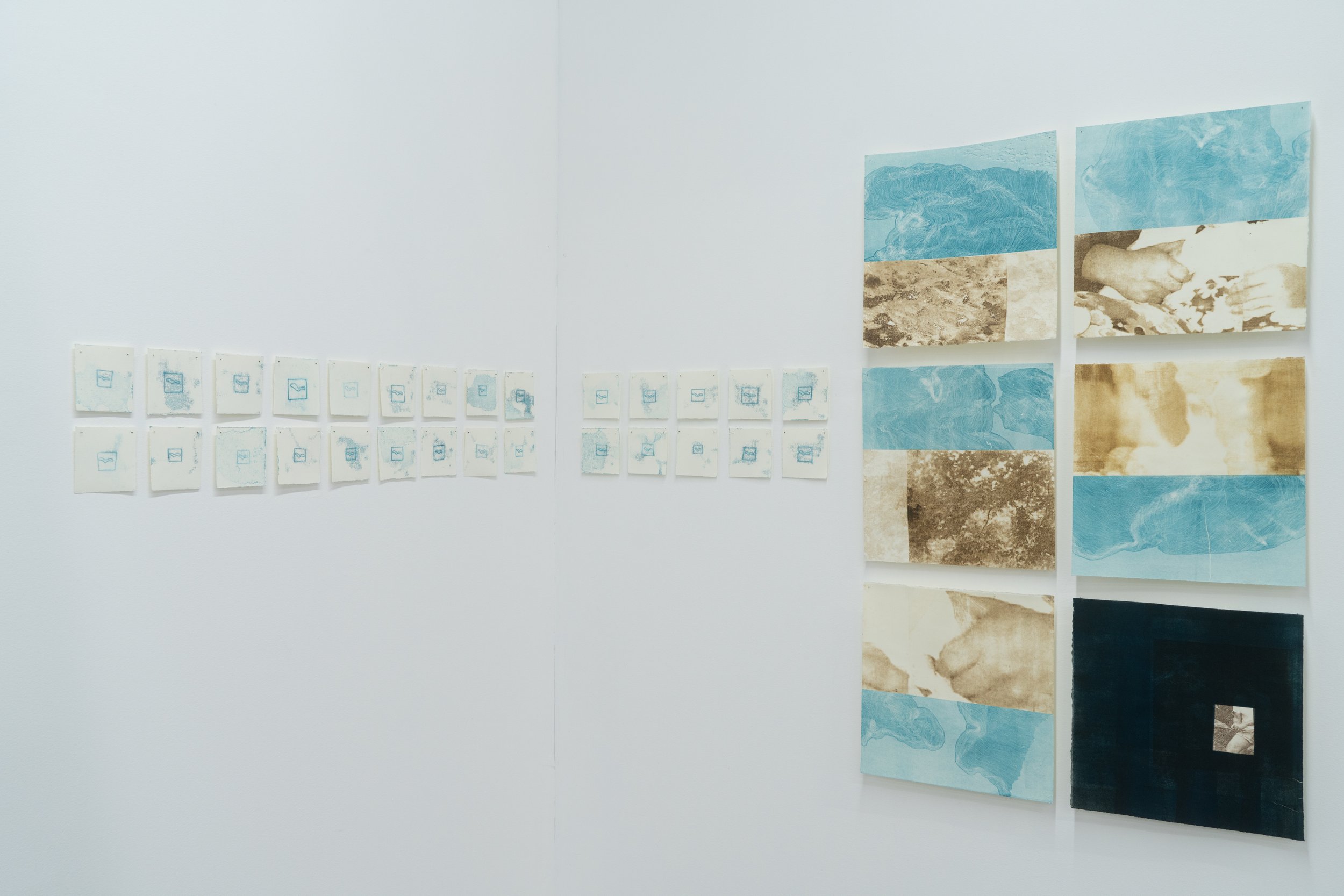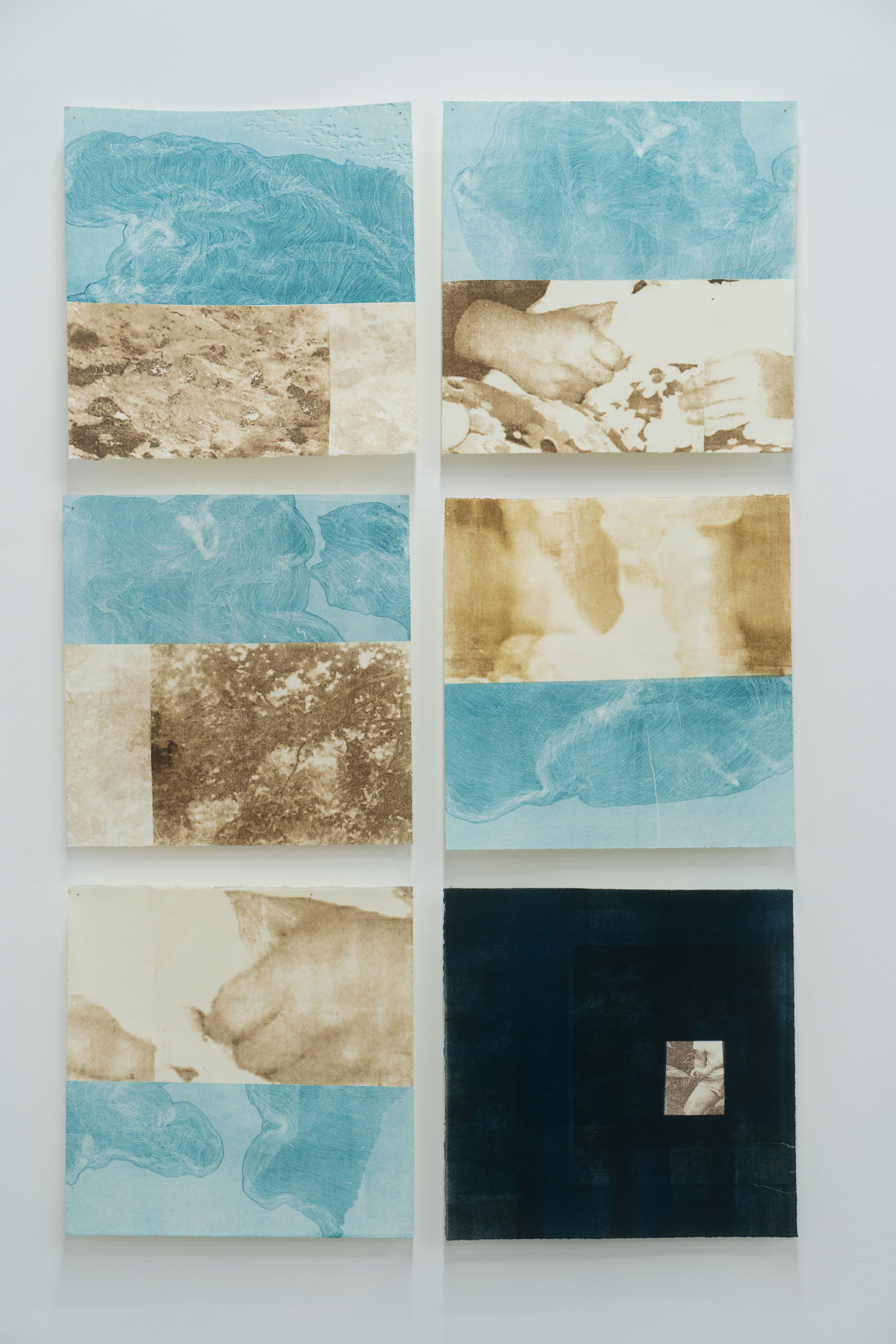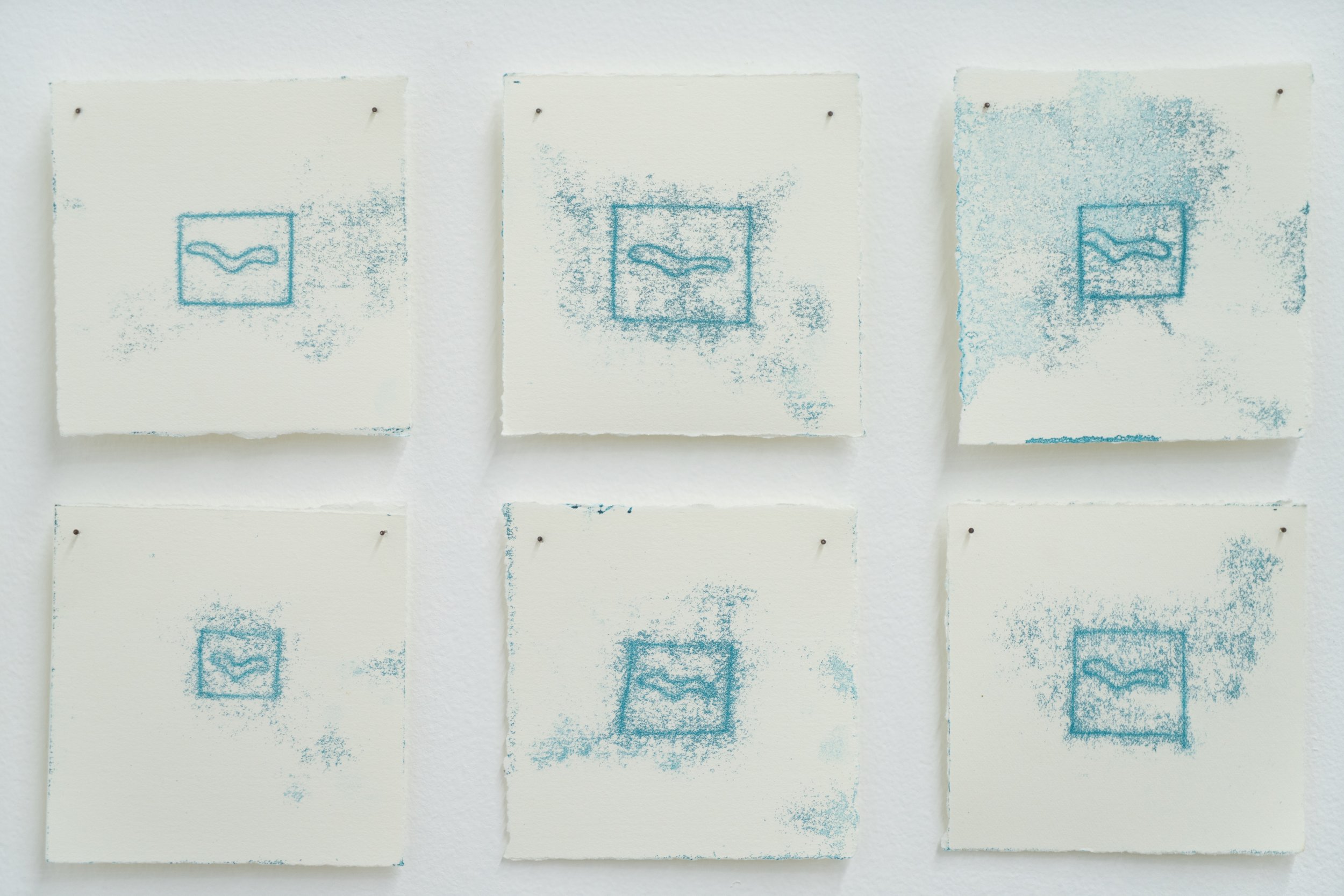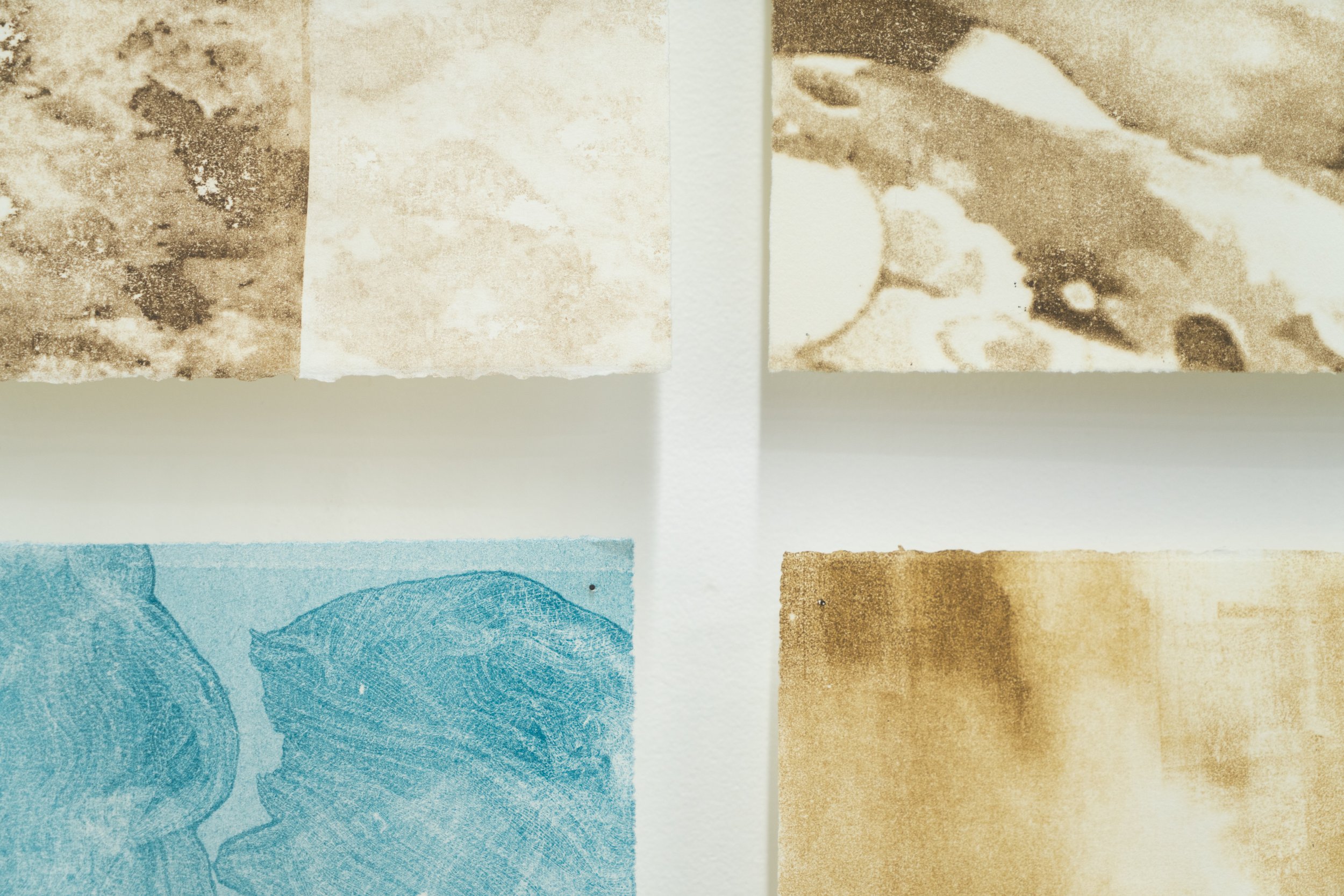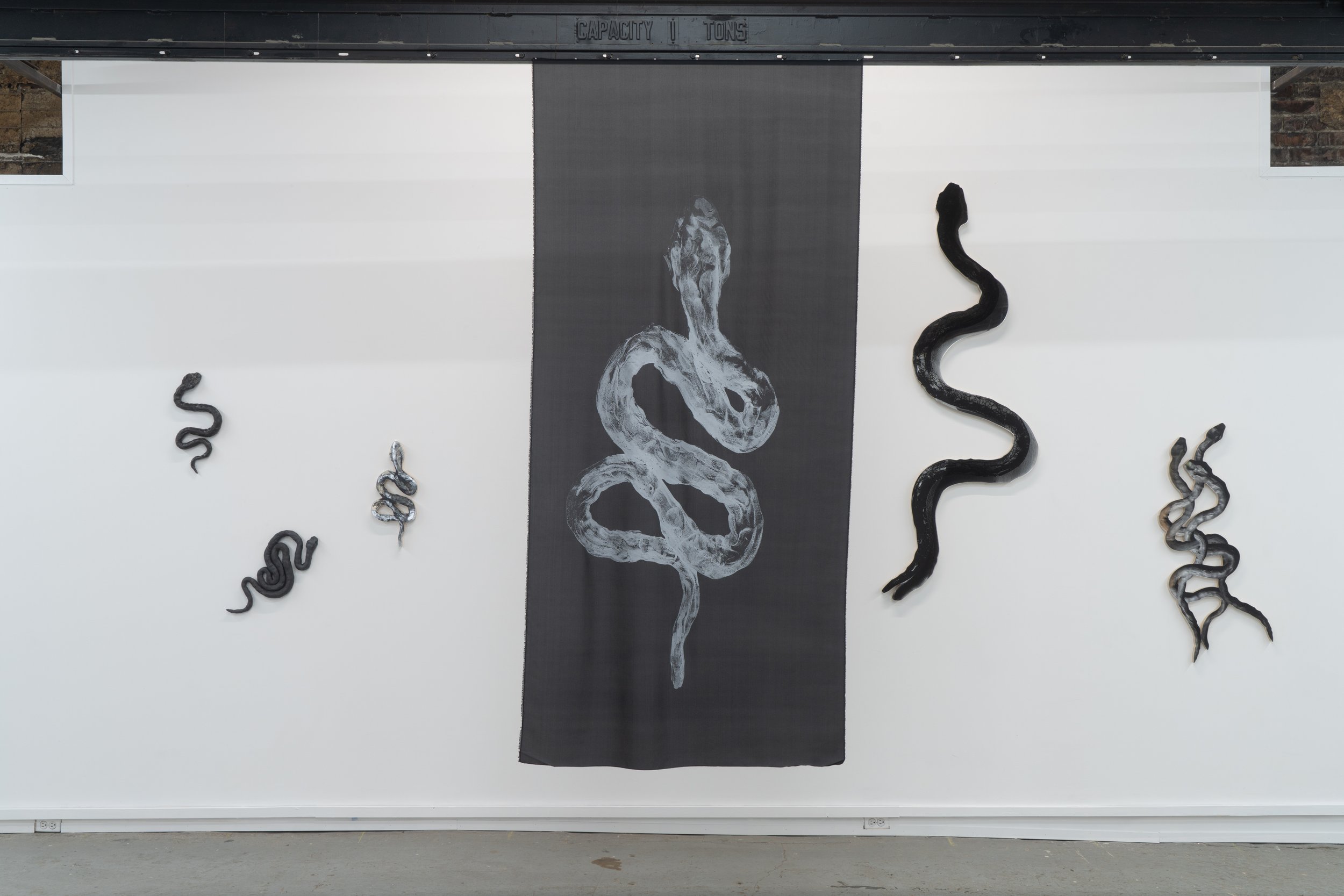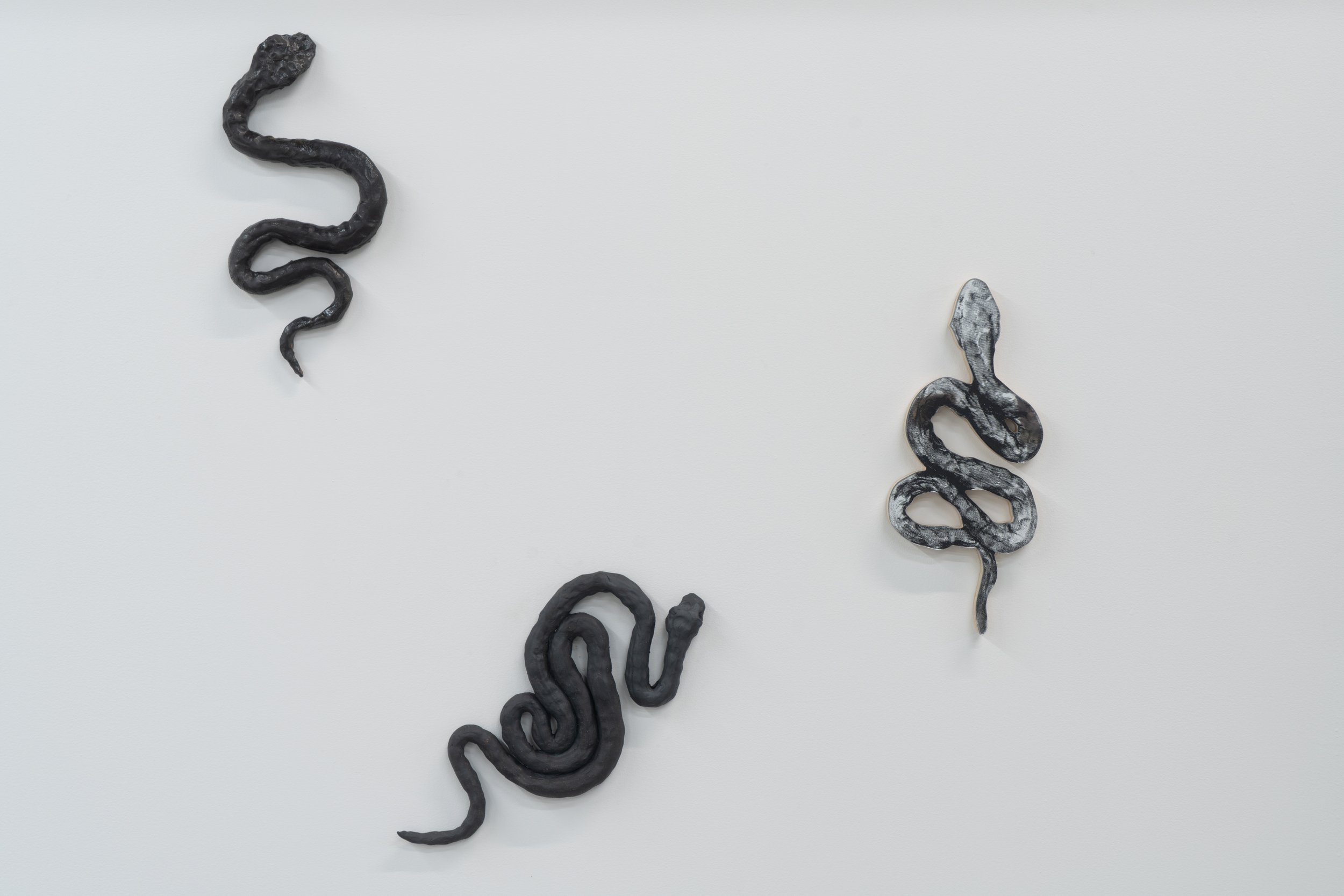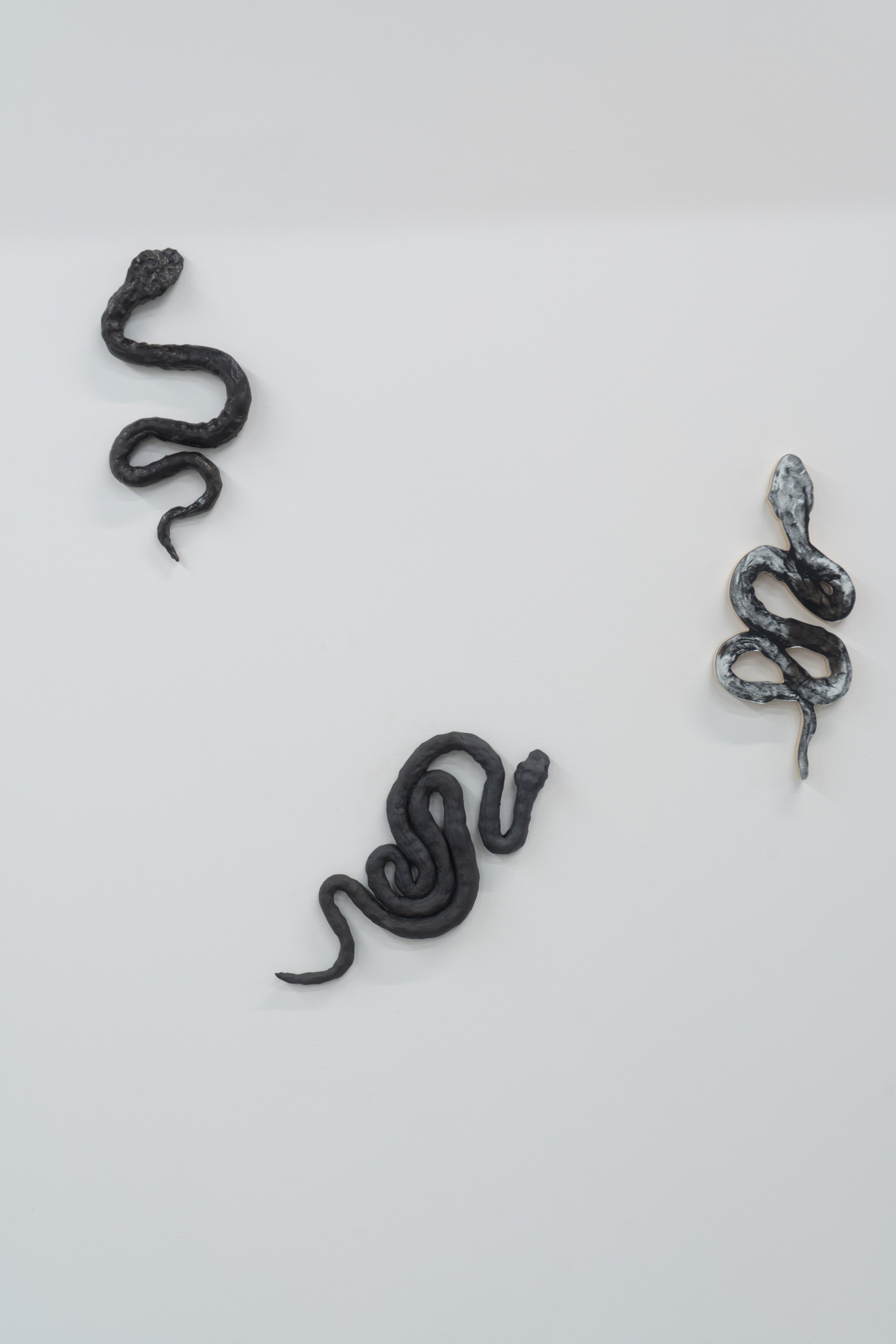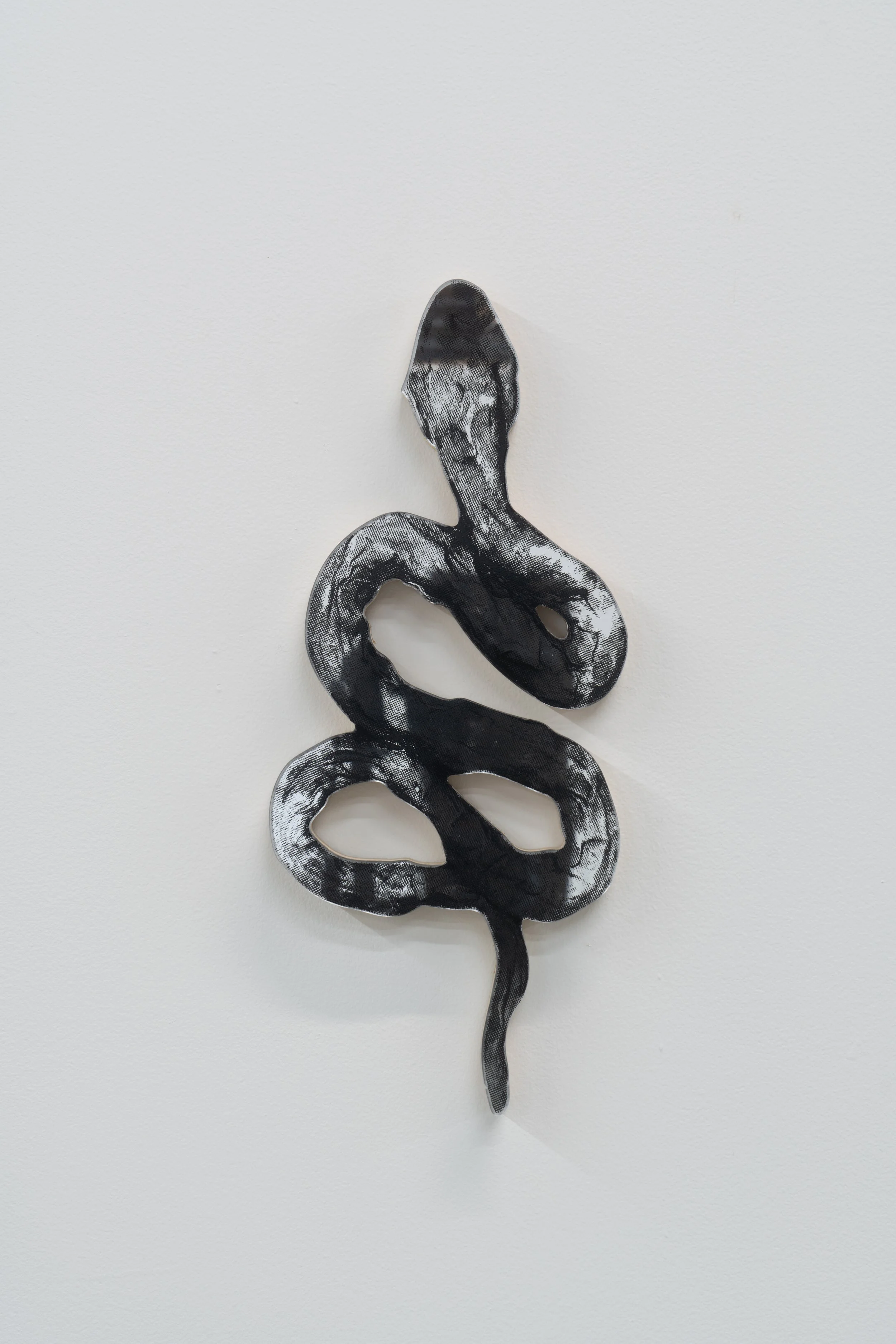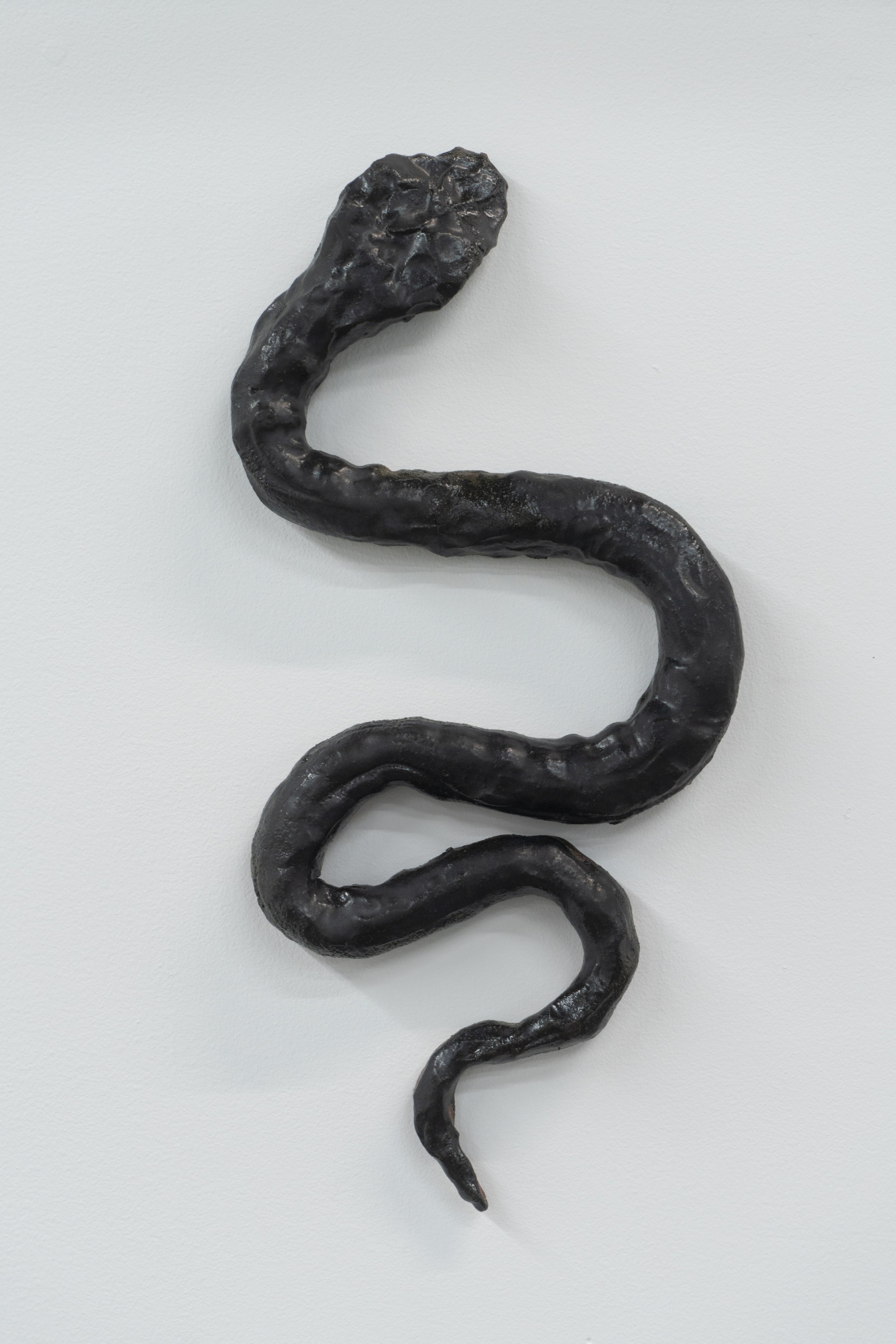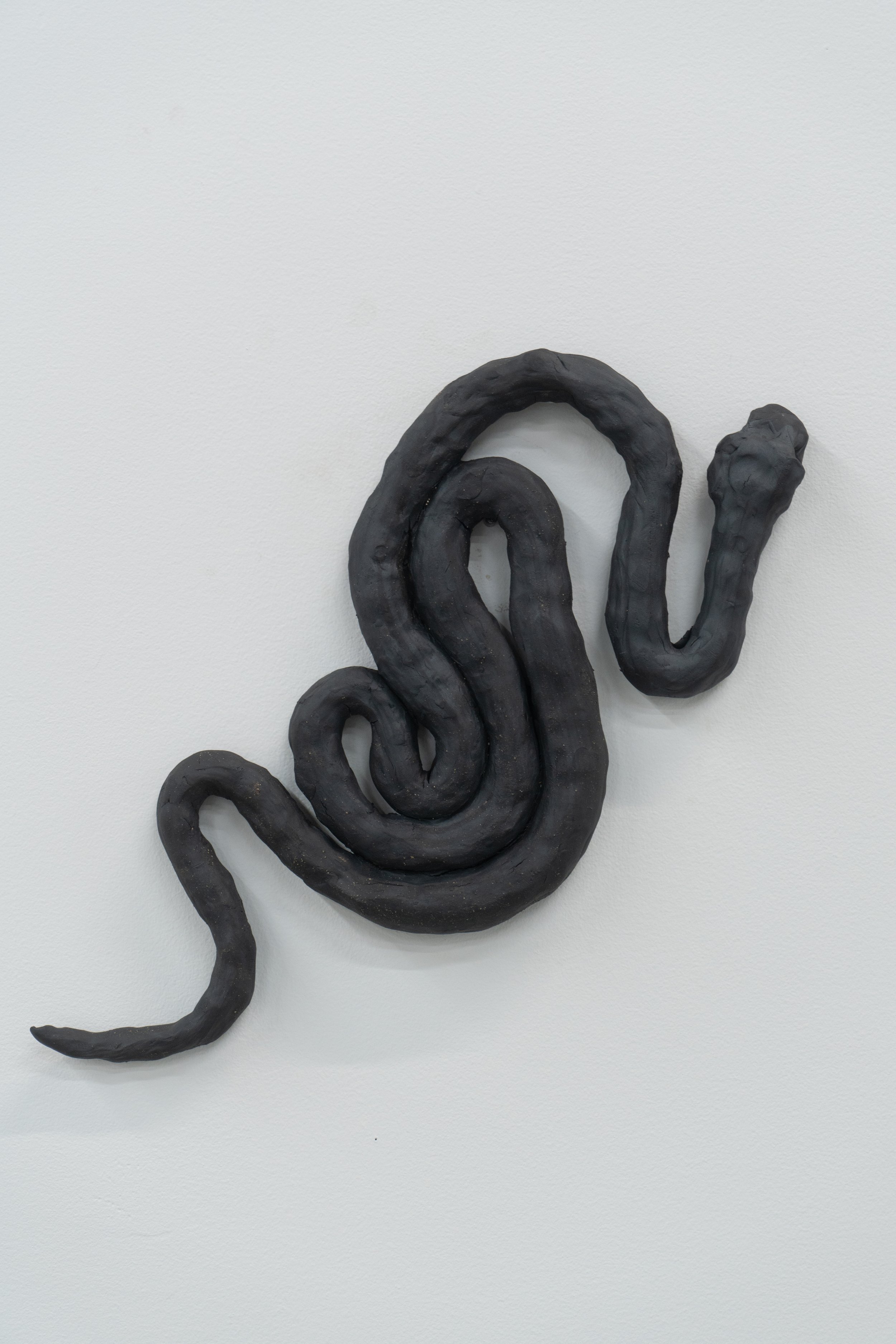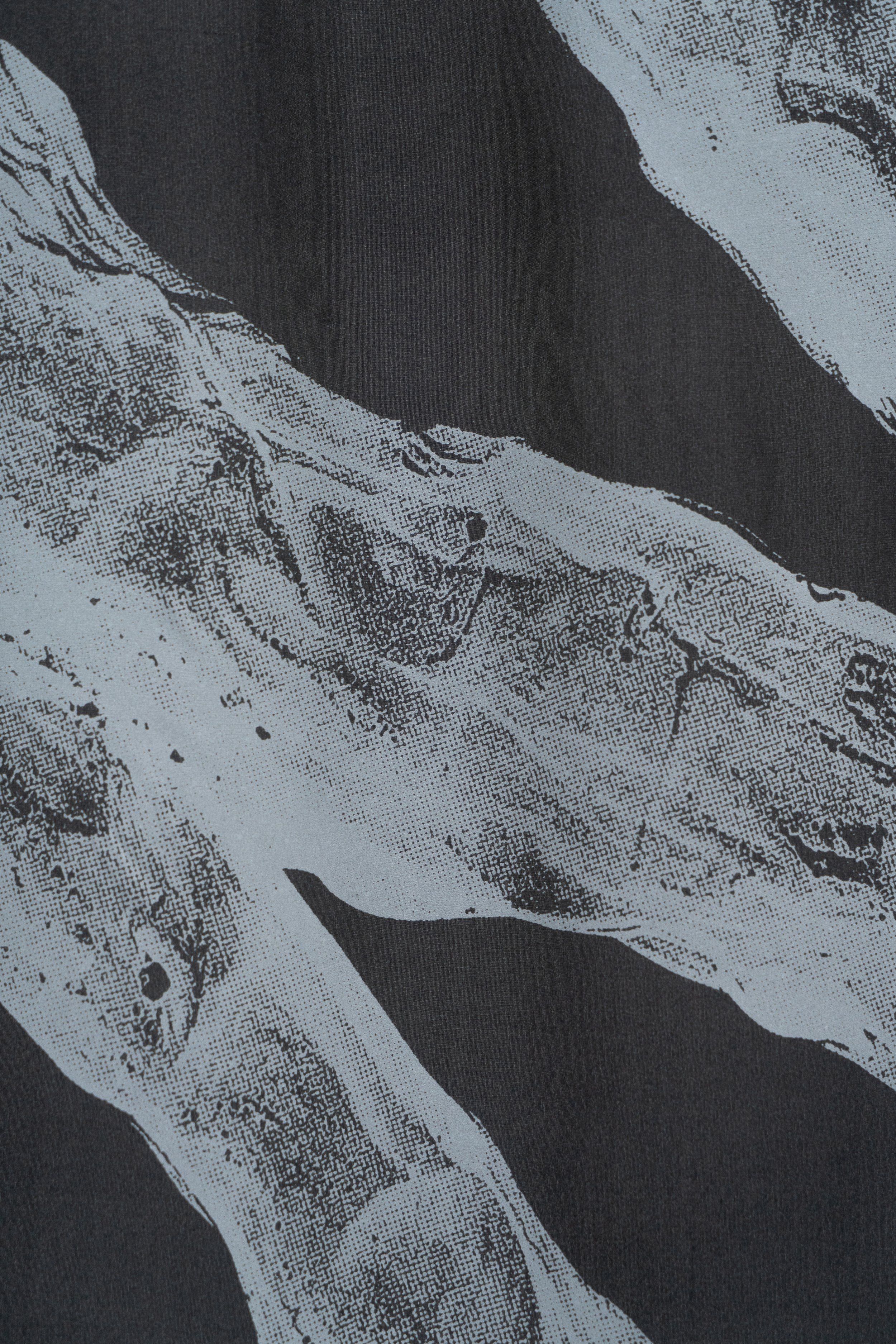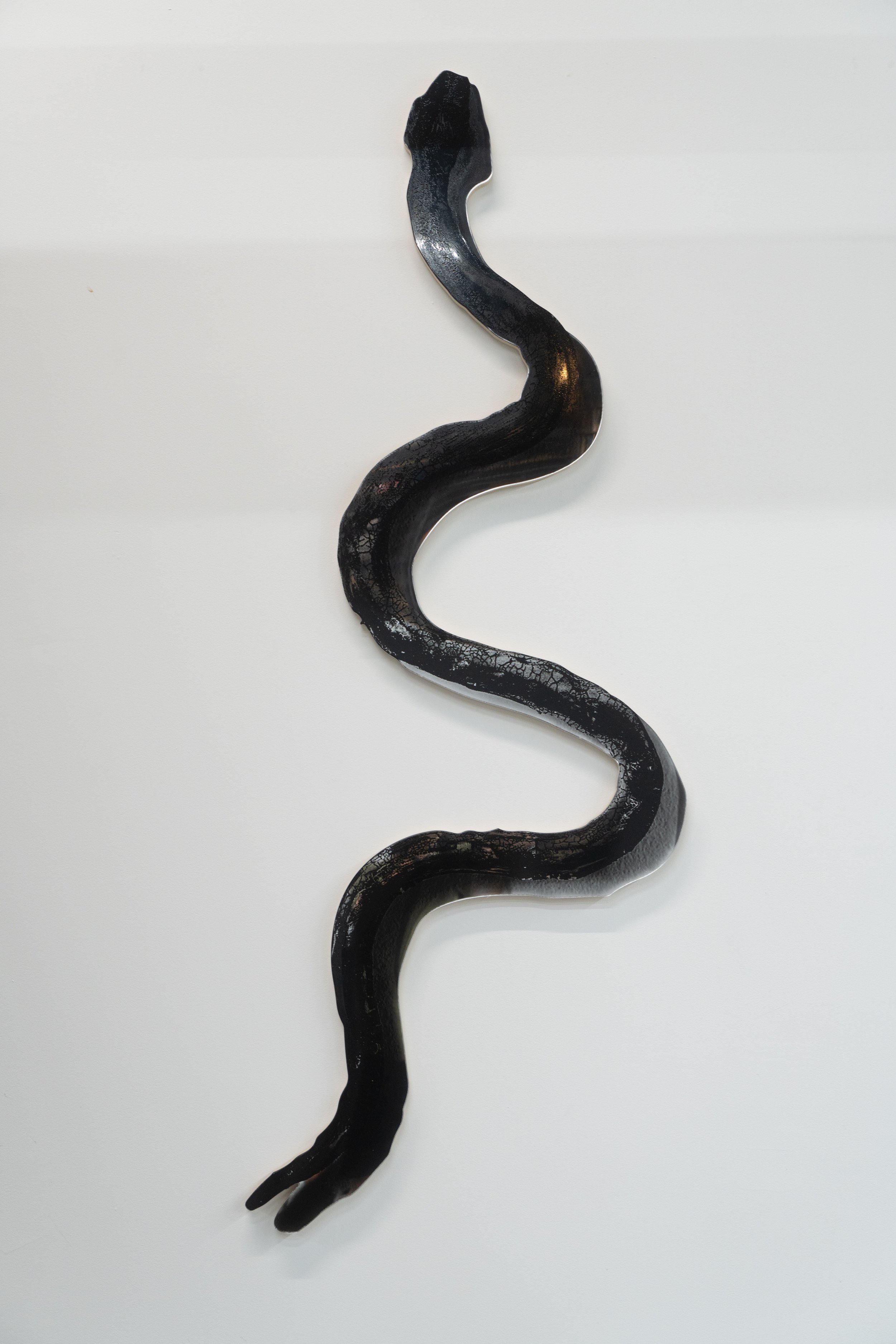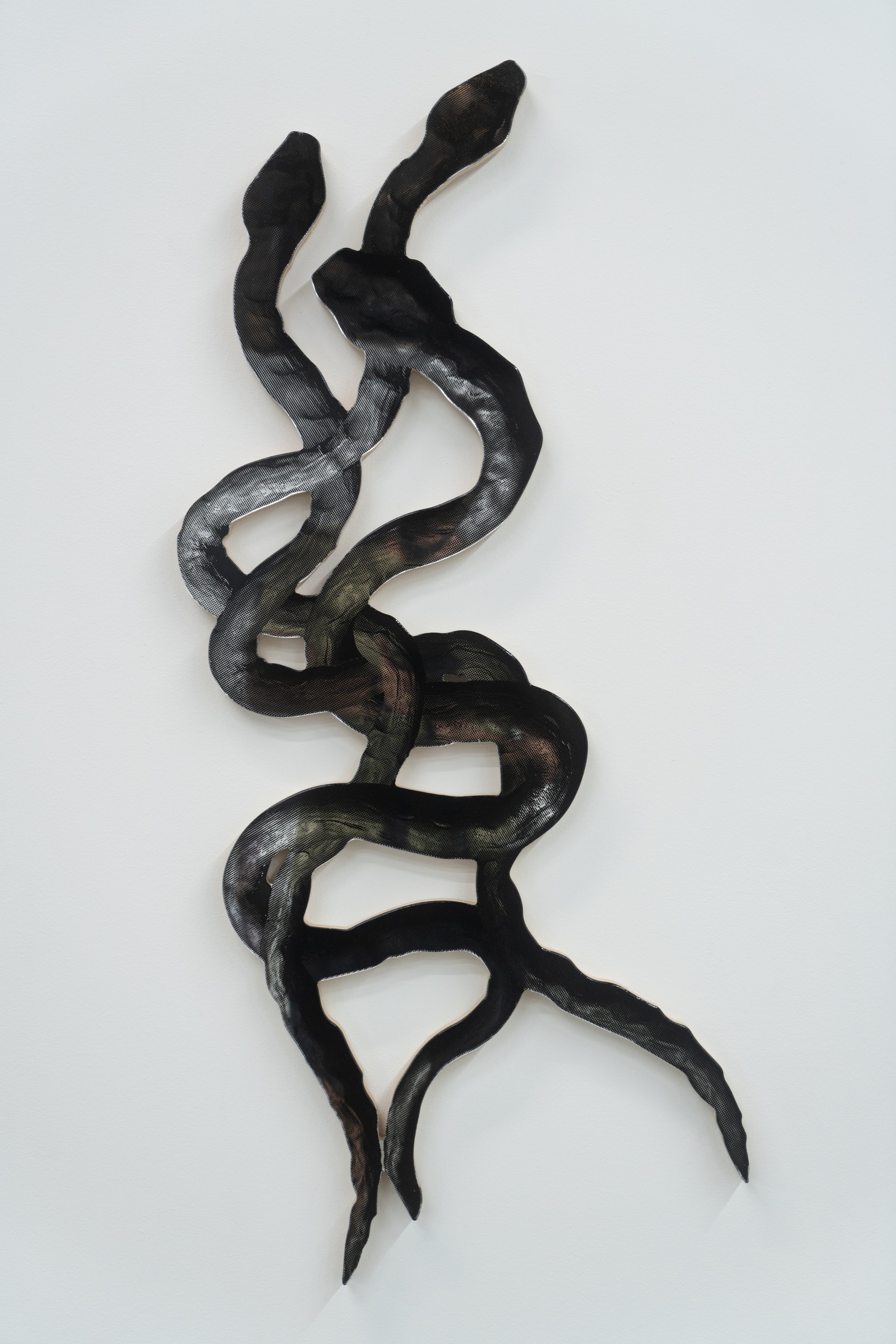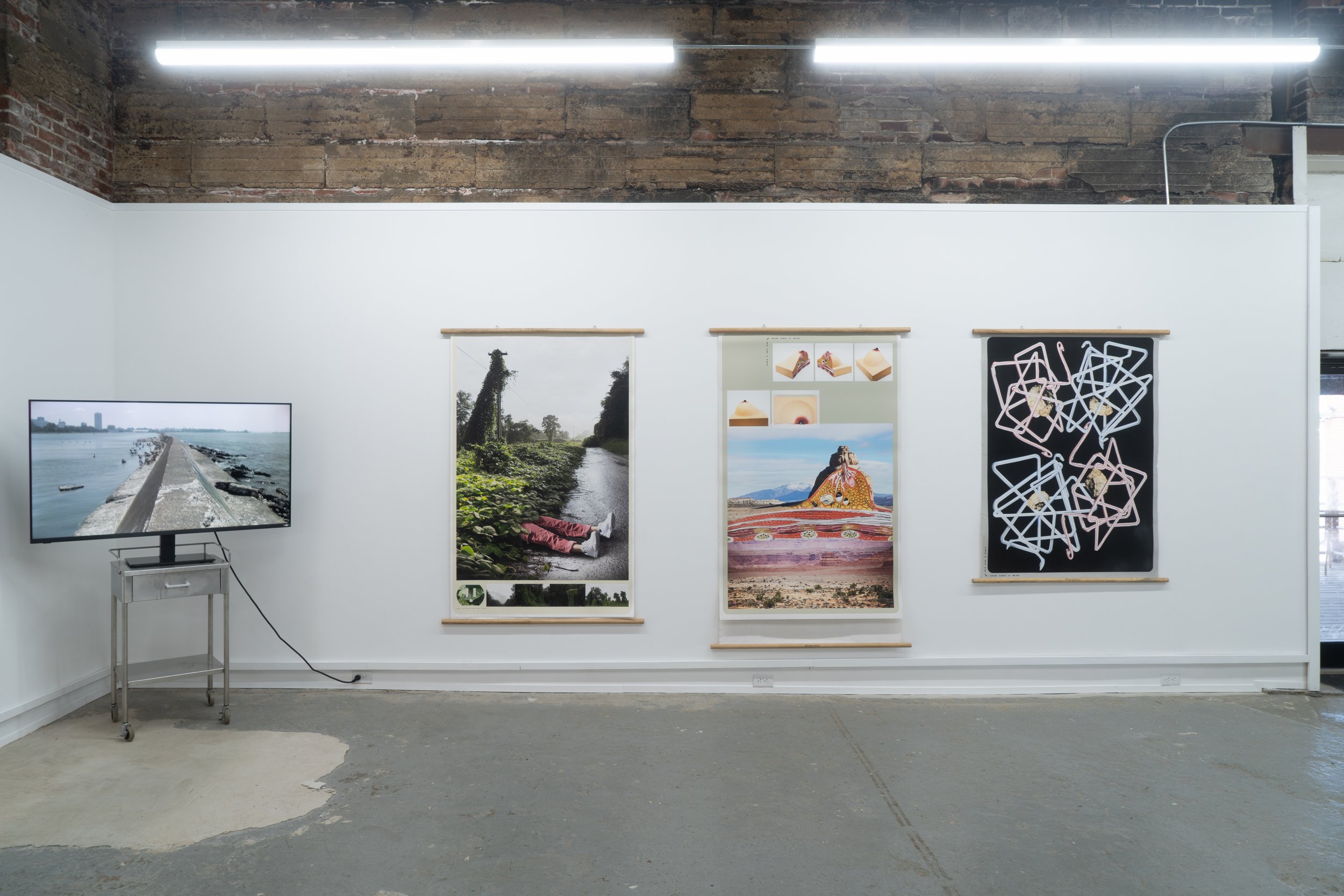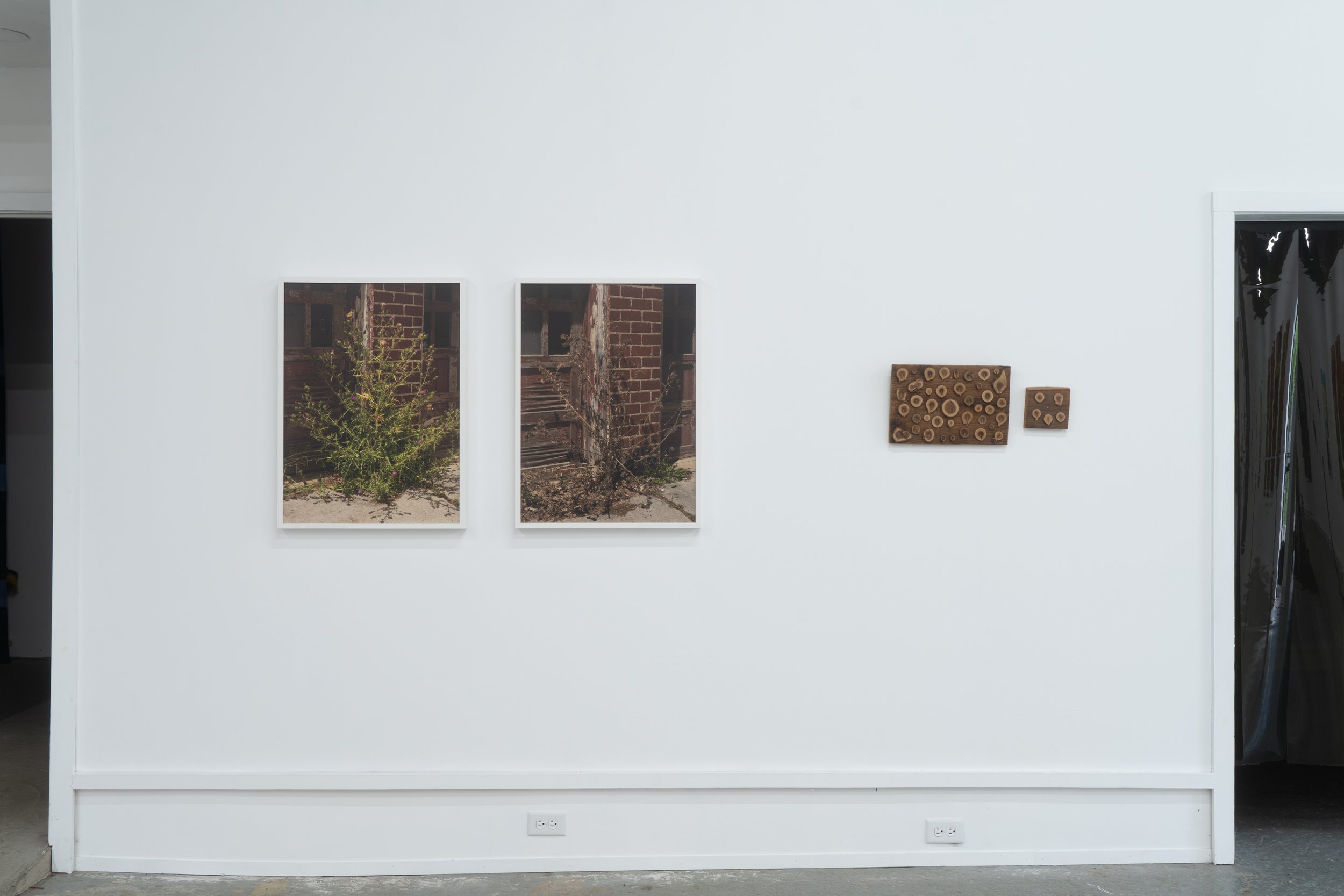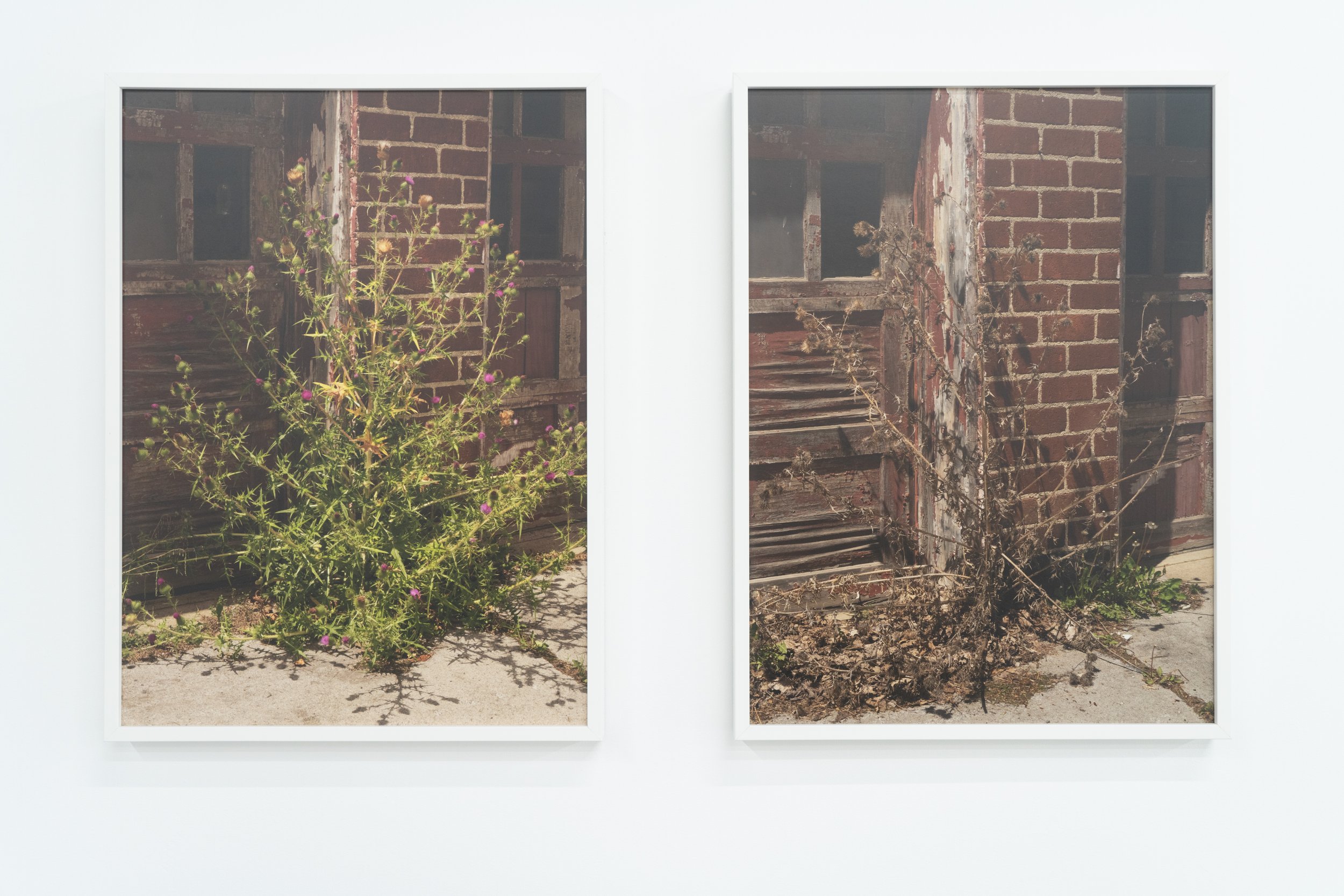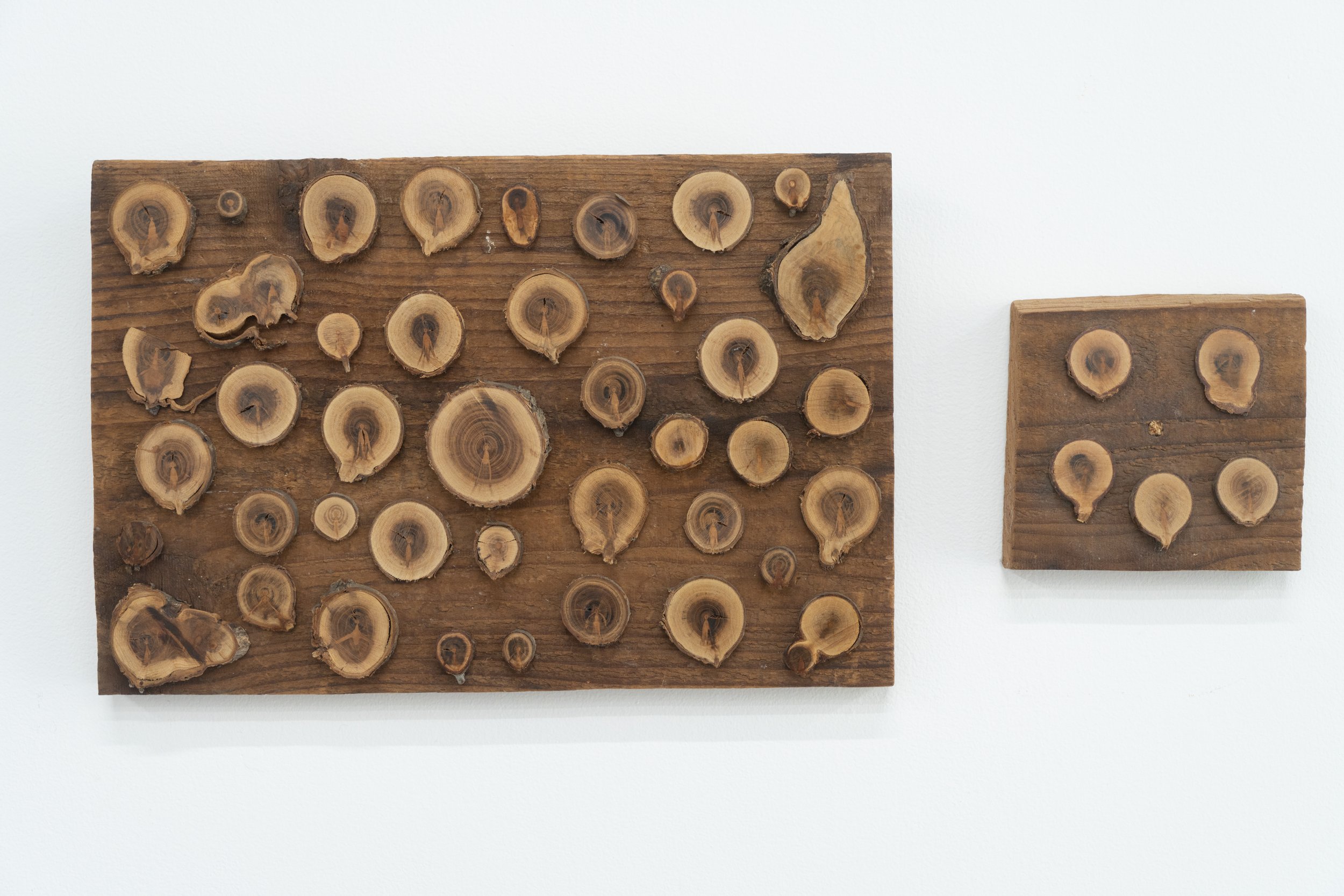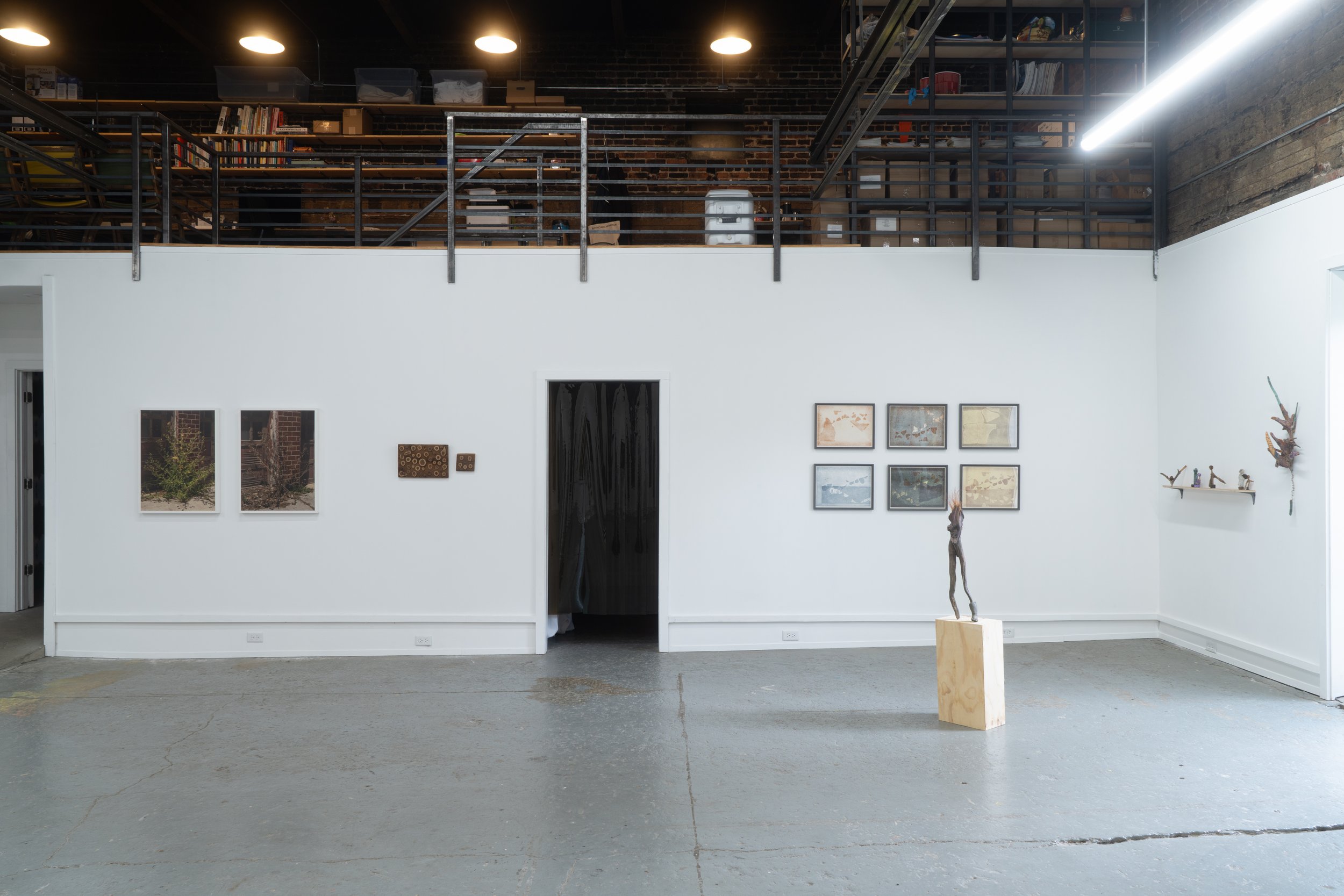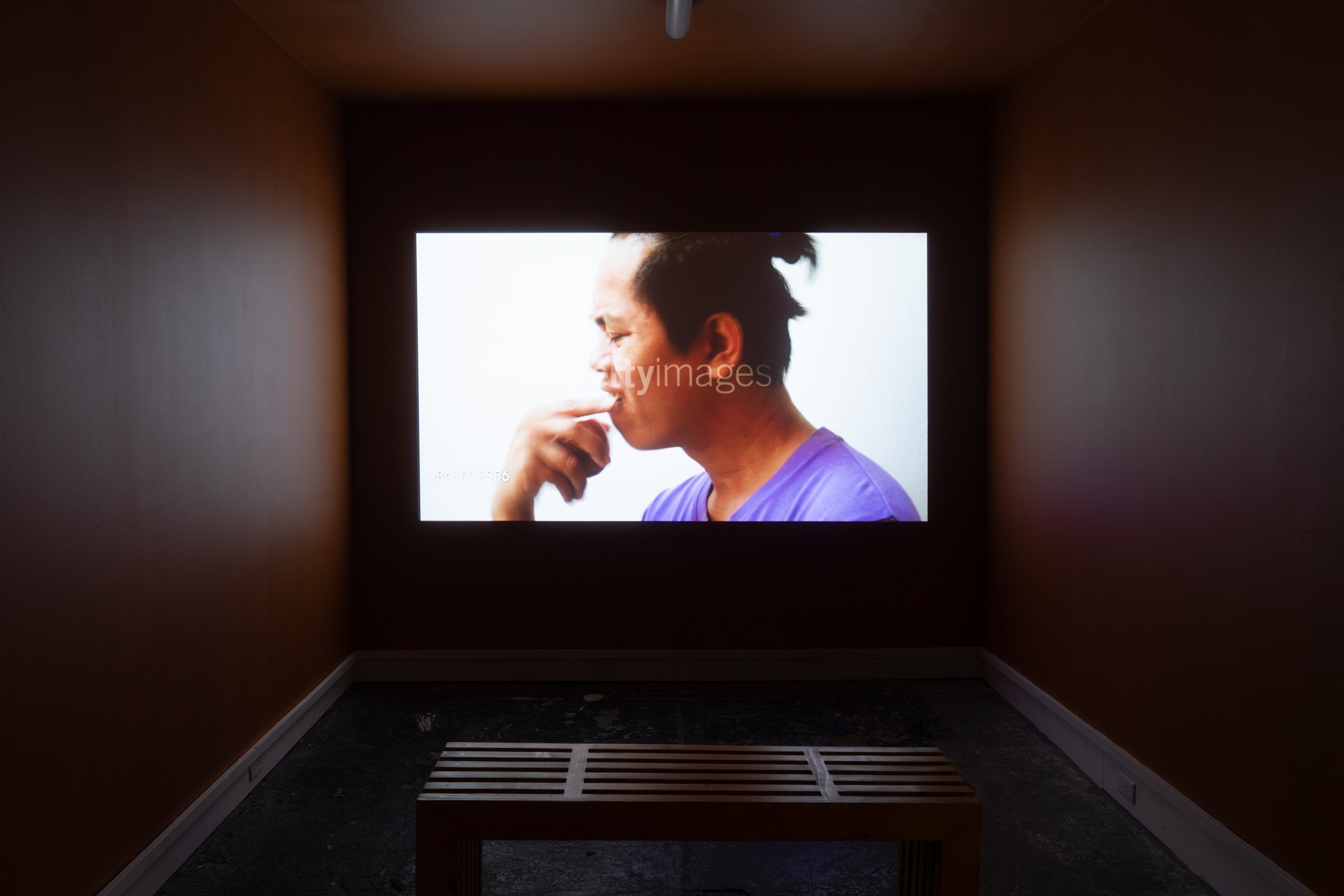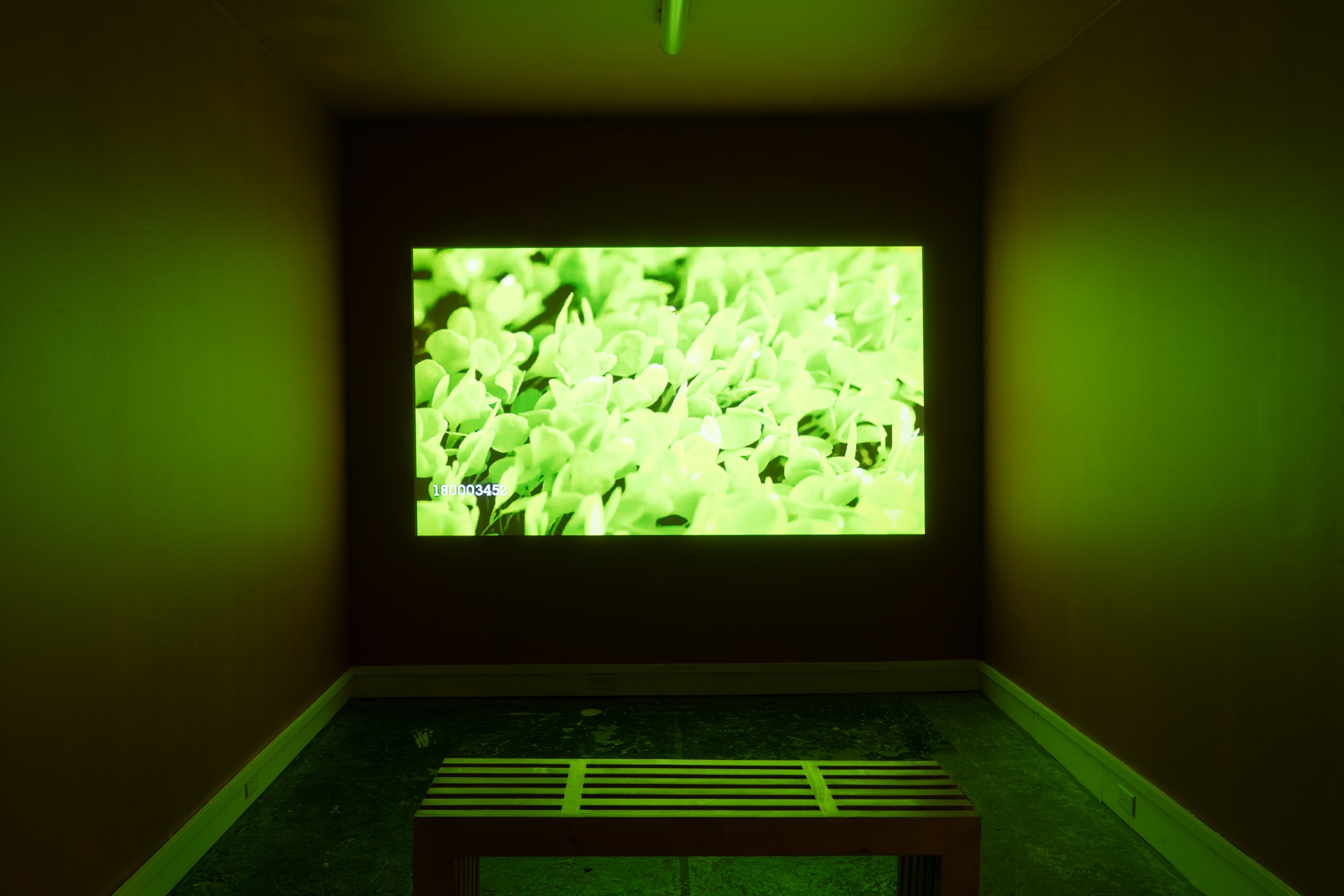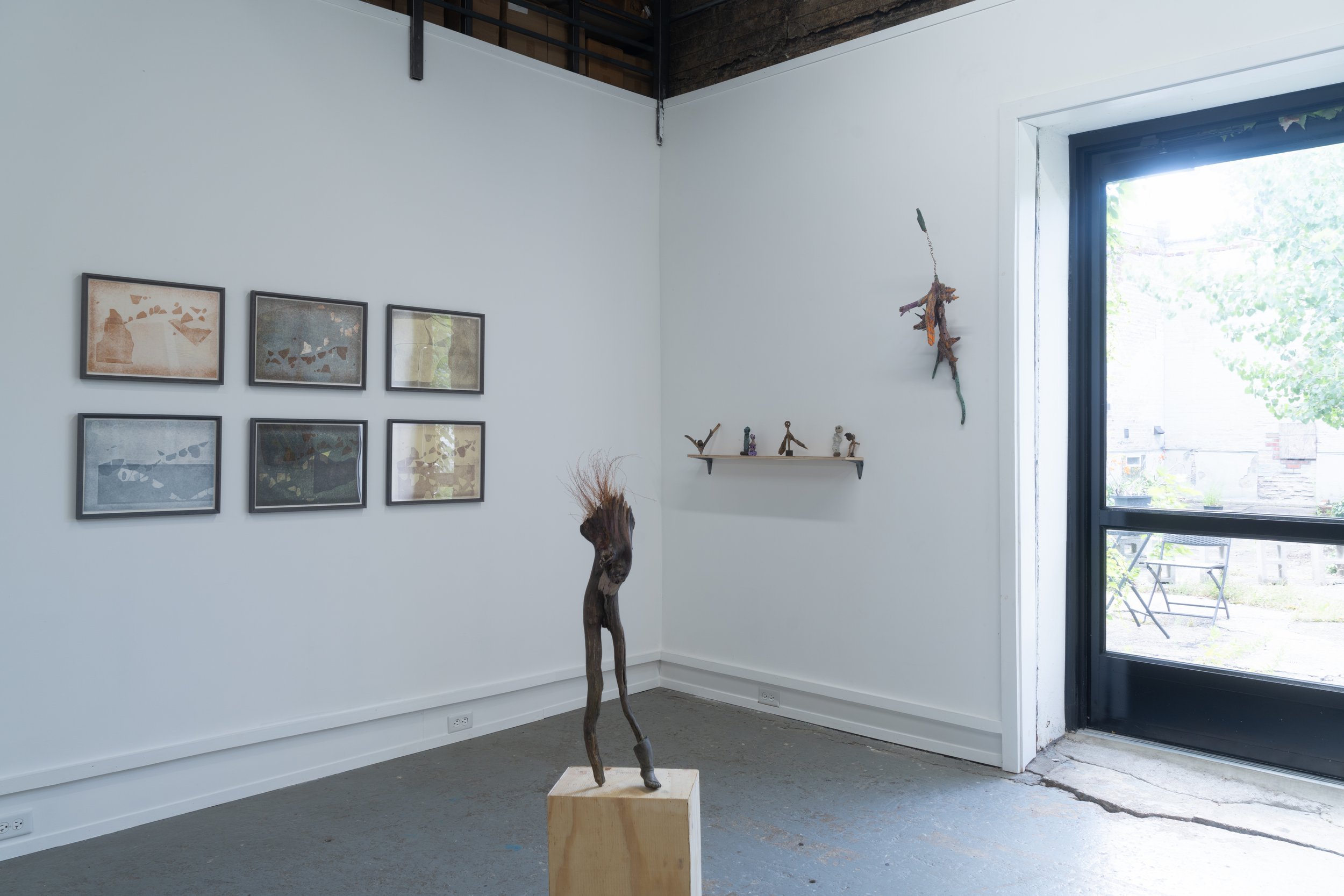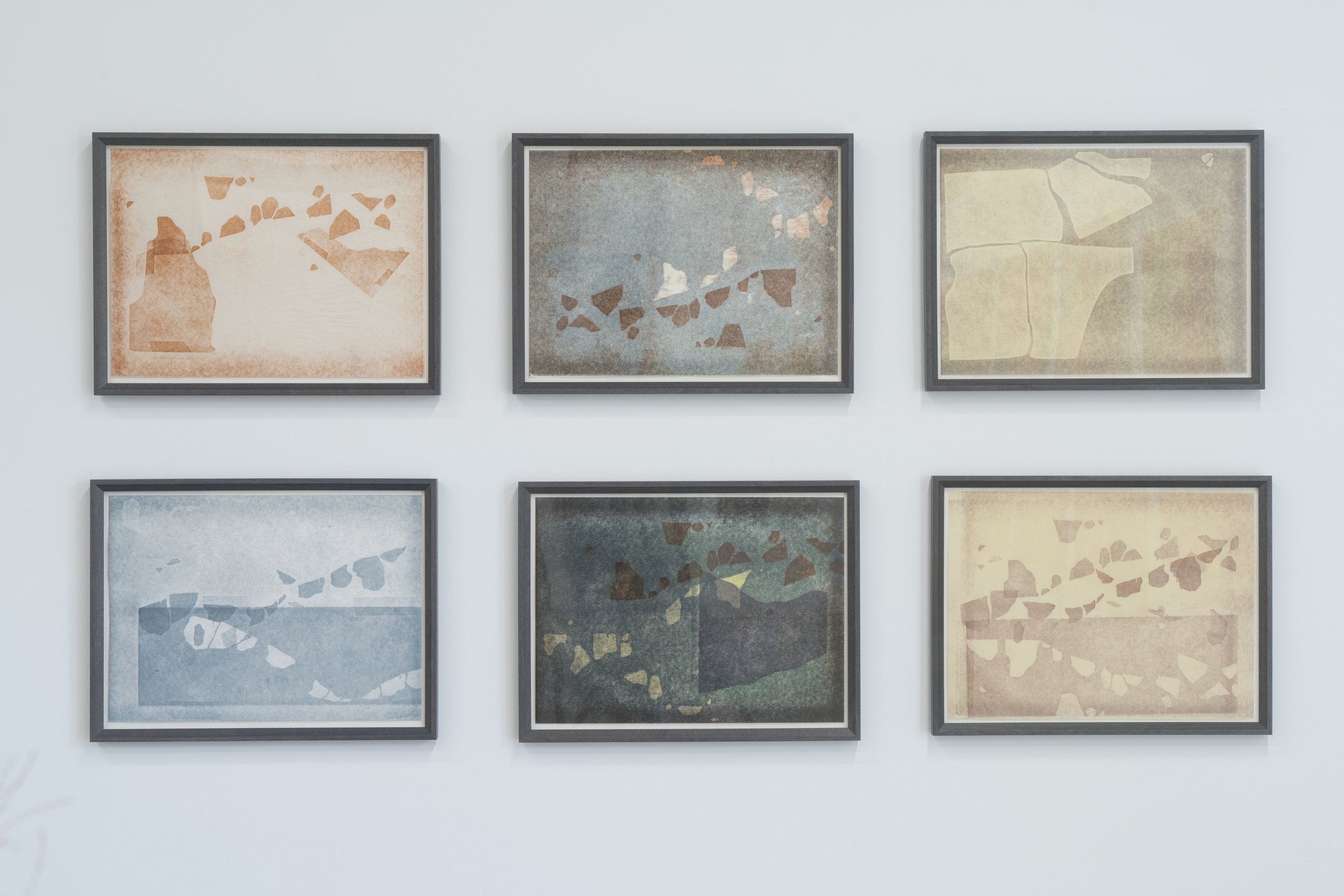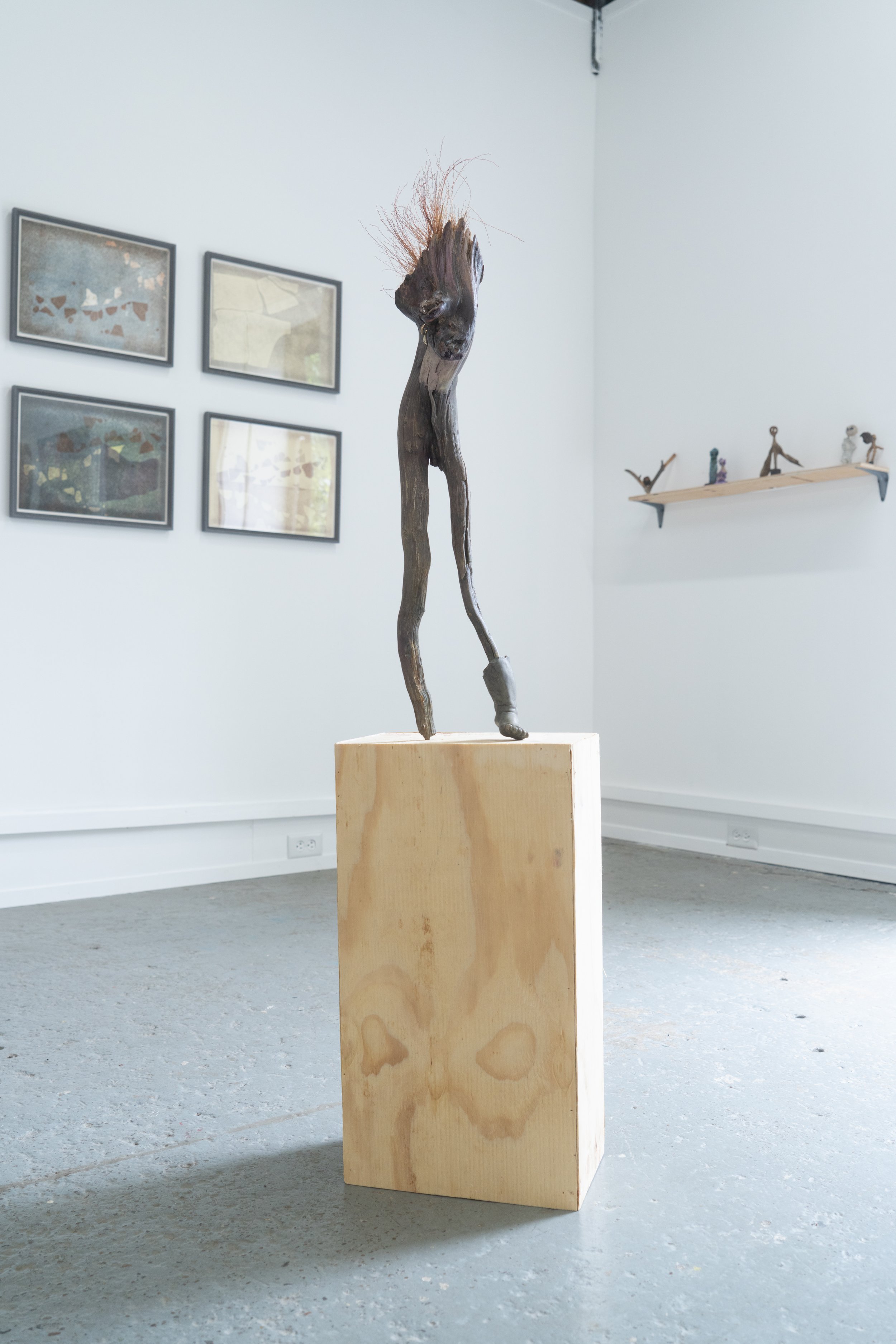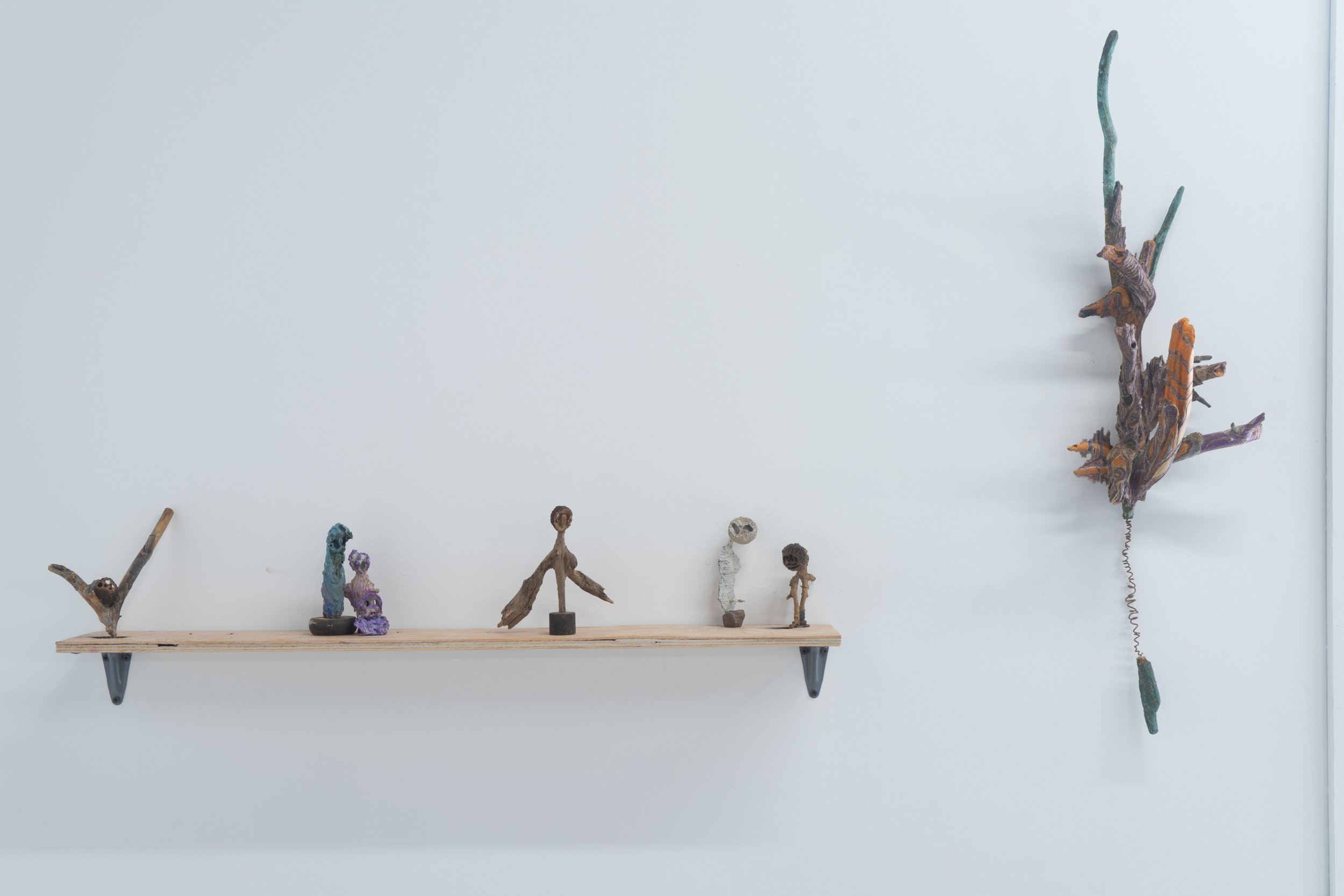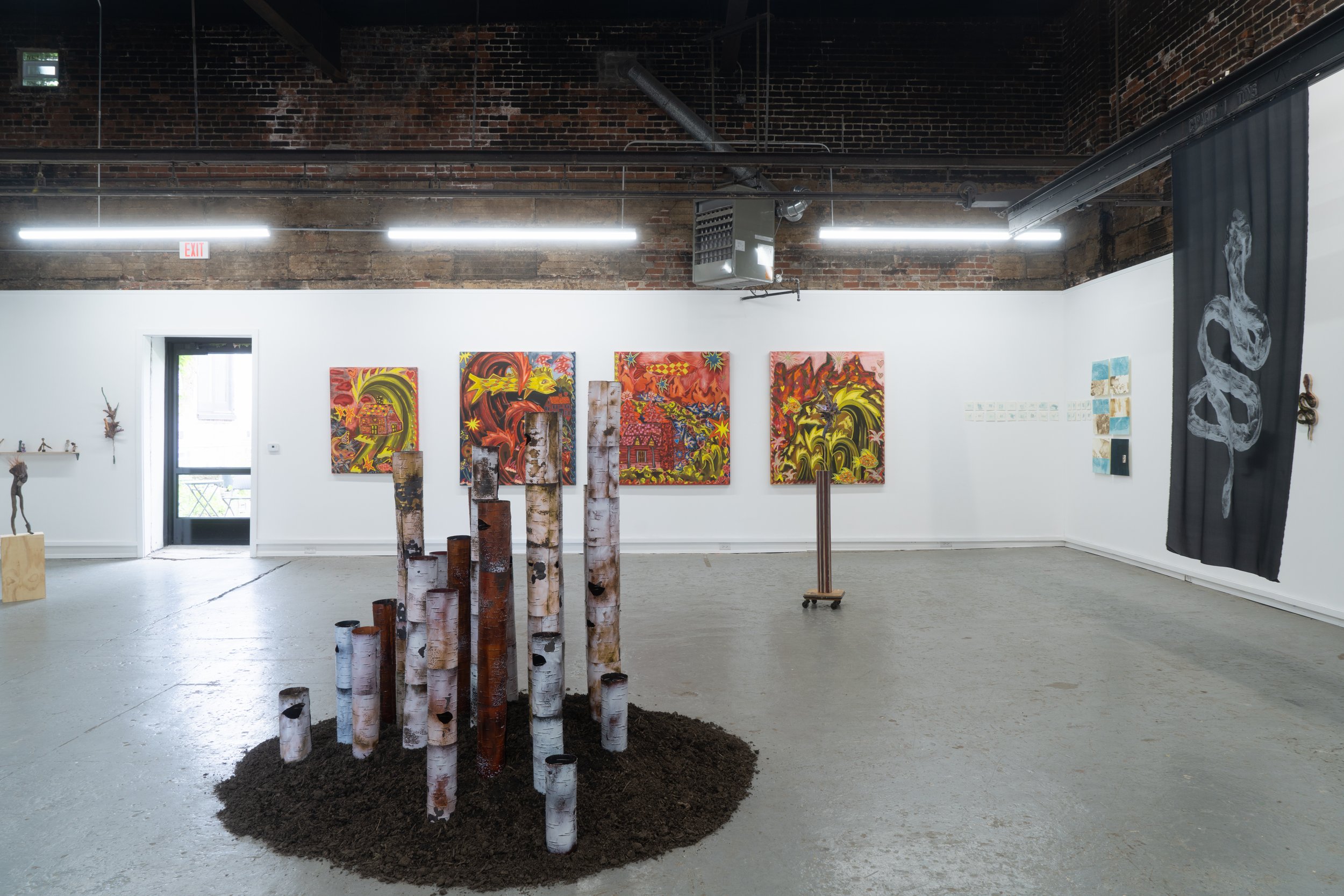INTER-AFFECTION
Left: Ryan Arthurs, Ramrod’s Disintegrating Empire I, 2020. Archival pigment print, 30 x 22 inches. Courtesy of the artist. Right: Eve Biddle, Mirrored Snake: Tangle, 2022. Screenprint on mirror and wood, 42 x 14 x 1 inches. Courtesy of the artist.
08.04.23 - 09.10.2023
Opening Reception August 4, 7–10 PM
Sometime in the early 8th century, deep in a German forest, Anglo-Saxon missionary Saint Boniface and his entourage spent hours chopping down a giant oak tree as horrified pagans looked on helplessly. Donar’s Oak, also called Thor’s Oak, was felled in a show of dominance as part of a larger (successful) effort to Christianize Germany. Groves of trees were the churches of many pre-Christian religions. In Old High German the words “temple” and “holy grove” have the same semantic origins. It was common practice during this period to destroy sacred natural sites to demonstrate the Christian God’s might, strike fear in the hearts of non-believers, and attempt to erase these older belief systems. The story goes that the wood harvested from Donar’s Oak was used to build a church dedicated to Saint Peter.
Reverence for nature once transcended territories, borders, mountain ranges, and oceans. Holy places—clusters of trees, piles of stones, ancient meadows—leave little archaeological record, and yet traces of this belief system linger in ways we might not notice: in myths, songs, rituals, and art. Nature worship is an important part of many religions to this day, but this belief system is often directly at odds with capitalistic attitudes of resource extraction and human supremacy.
This exhibition features artists whose works complicate and reorient our understanding of our place within what writer James Bridle terms the “more-than-human” world. These artworks ask us to shift our perspective and invite empathy in; to open ourselves up to valuing relationships over abilities; to elevate shared, interconnected life above the level of dominance of nature demonstrated by Boniface. The natural world has the potential to teach, heal, awe, and uplift, but only if we can embrace the challenge and invitation always present in the non-human world.
Inter-affection is a term from cognitive science which describes how bodily resonance—our tender human bodies in direct, physical relation with the outside world—can build empathic understanding. The ancient oaks are long gone, but maybe through a radical expansion of our understanding of our place in the world, we can undo some of the damage we have done.
Thanks to the artists whose works are present here, we can put inter-affection into practice, celebrating the porousness of our interrelationship with the world outside ourselves.
Together we can:
Contemplate the drift of continents and human extractive practices with Rachel Shelton and Crystal Z. Campbell
Find faces and figures in overlooked tree branches and twigs in the sculptures of Casey Mark Schultz and Paul Morgan
Examine the macro and micro of human interrelationship within the natural world in the work of Eve Biddle and virocode
Shift our perspective around invasive and unwanted living things in Ryan Arthurs’ photography
Meditate on grief and resilience with the help of winged messengers and cleansing tsunamis as seen in the work of Olivia Long and Eli Thorne
Support for this exhibition was provided by the Andy Warhol Foundation for the Visual Arts.
Participating artists:
Ryan Arthurs (Buffalo, NY)
Eve Biddle (Wassaic, NY)
Crystal Z. Campbell (Buffalo, NY, and Oklahoma)
Paul Morgan (Los Angeles, CA)
Eli Thorne (Kingston, NY)
Olivia Long (Buffalo, NY)
Casey Mark Schultz (Buffalo, NY)
Rachel Shelton (Buffalo, NY)
virocode (Buffalo, NY)
Curated by Katie Hood Morgan
Katie Hood Morgan is a curator based in New York’s Hudson Valley. She is currently Chief Curator and Deputy Director at the Hunter College Art Galleries in New York City where she oversees three gallery spaces and a robust publication program. Forthcoming independent projects include a long-term permanent collection reinstallation at the Dorsky Museum, SUNY New Paltz, opening September 2023.
Katie worked at the San Francisco Art Institute in various curatorial roles over the period of a decade, including that of Curator of Exhibitions and Public Programs. She has organized major exhibitions and public programs with artists and collectives including Patti Smith, Postcommodity, Jill Magid, and Carlos Villa as well as a 27-artist exhibition of contemporary French Caribbean sculpture which toured the US from 2019-22. She holds a MA in Curatorial Practice from California College of the Arts and a BFA in the History of Art and Visual Culture from UC Santa Cruz. She has contributed to programming and curatorial projects with institutions and organizations including Hunter East Harlem Gallery, FOR-SITE Foundation, CCA Wattis Institute, Oakland Museum of California, SFMOMA, and MASS MoCA.
